- info@naturebylennart.com

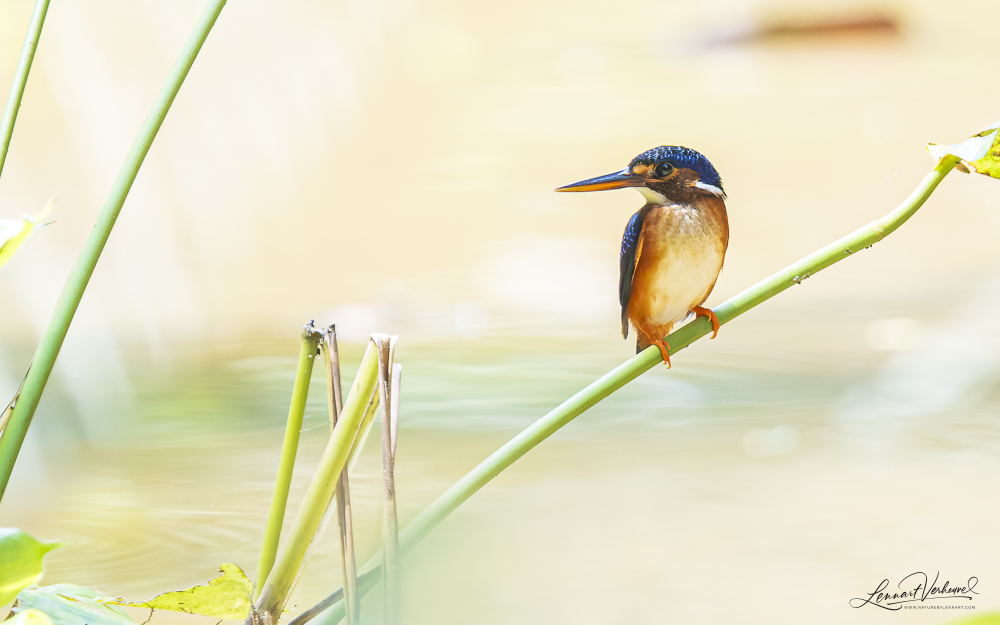
In the summer of 2025, I spent three weeks traveling through Uganda. Some of the most remarkable days or sightings from this trip I’m writing out in separate blog posts with plenty of photos. This time it’s Semliki’s turn!
After our time in Kibale, we drove on to Semliki. This forest borders the Congolese frontier, separated from Congo by a river. Beyond that river lies the Ituri Rainforest: home to one of the coolest mammals in the world—the Okapi! You won’t find Okapi in Semliki itself, but that doesn’t mean there aren’t other special animals to discover. Thanks to its location, this is the only place during a trip to Uganda where you can see forest birds that otherwise only occur in Congo. Semliki is also home to three remarkable primates: Dent’s Monkey, De Brazza’s Monkey, and even an endemic species: Semliki Red Colobus. Expectations were high!
But before we arrived, there was the journey from Kibale to Semliki. On the way, we stopped at a site where we had a chance to see a new species of weaver. Now, weavers already look far too much alike in my opinion, but of course, every new species counts. In this case, it turned out to be a really good one: Northern Masked Weaver. In Uganda, this bird can only be found in one spot, and that was exactly where we were headed.
At first, we thought we had the bird in sight straight away, but it turned out to be a Black-headed Weaver. We hadn’t quite memorized the features yet. There was also the possibility of confusing it with the Northern Brown-throated Weaver, though its pale eye usually makes it quite straightforward to distinguish from Northern Masked. Those weavers are beautiful in their own right, but they were not the ones we were after!
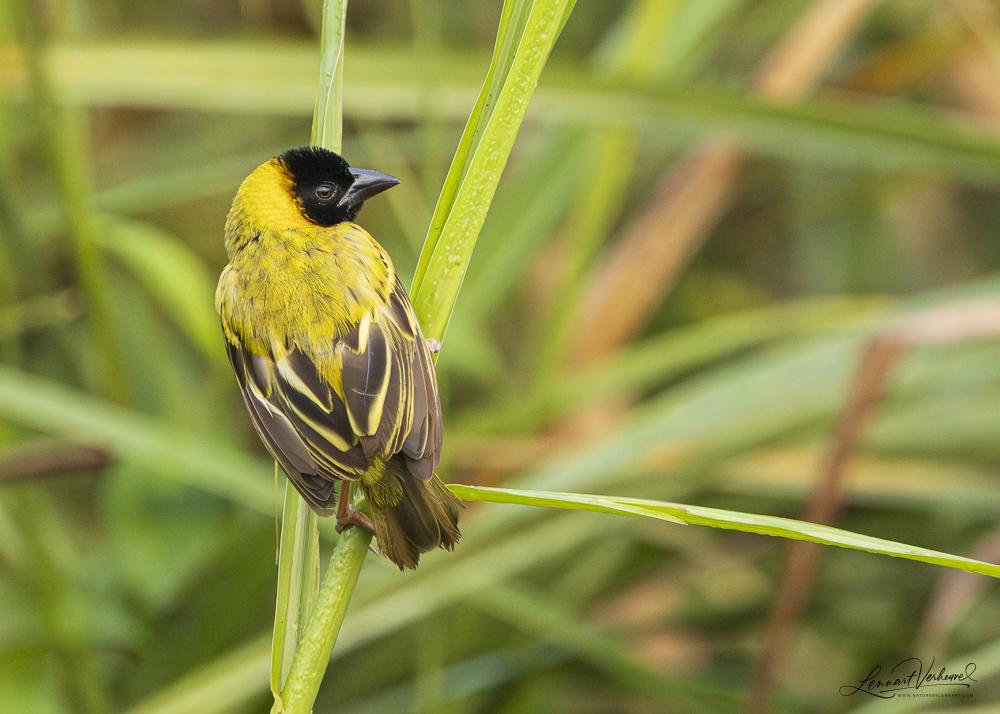
Black-headed Weaver
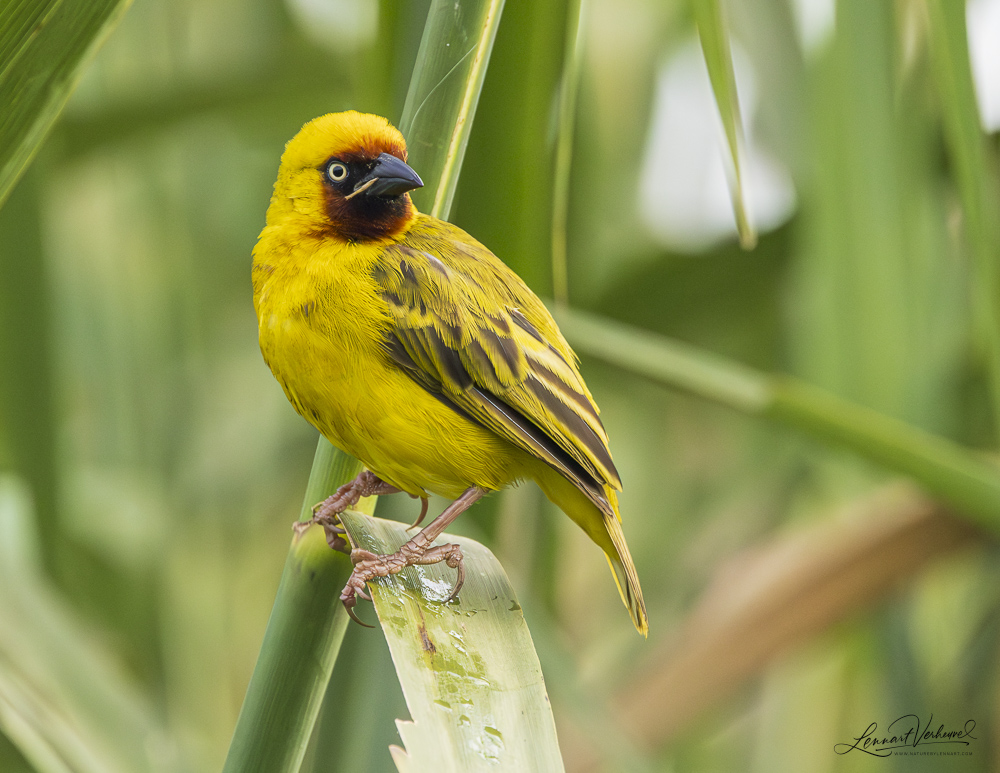
Northern Brown-throated Weaver
Finding that Northern Masked wasn’t easy. It’s especially important to find a male since the females are less distinctive and much harder to be certain about. In the end, we managed to spot a single male! He was perched by a nest, soon joined by a female. We had great views of the bird, with its distinctive brown crown and dark eye. From what we could tell, there was only one male among all the weavers, which makes me think this species may not be around here for much longer.
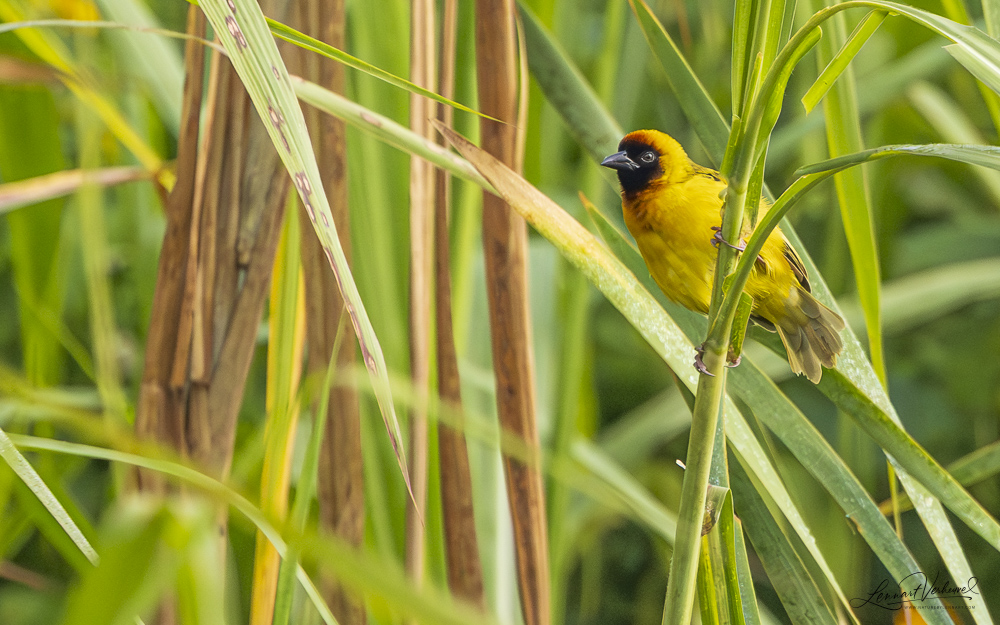
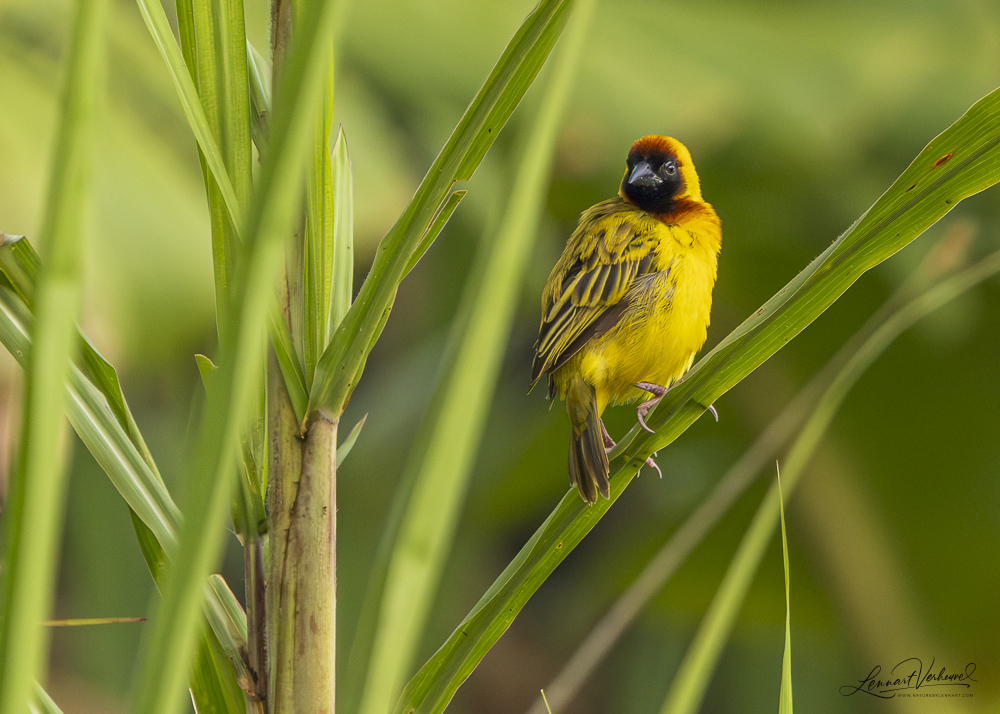
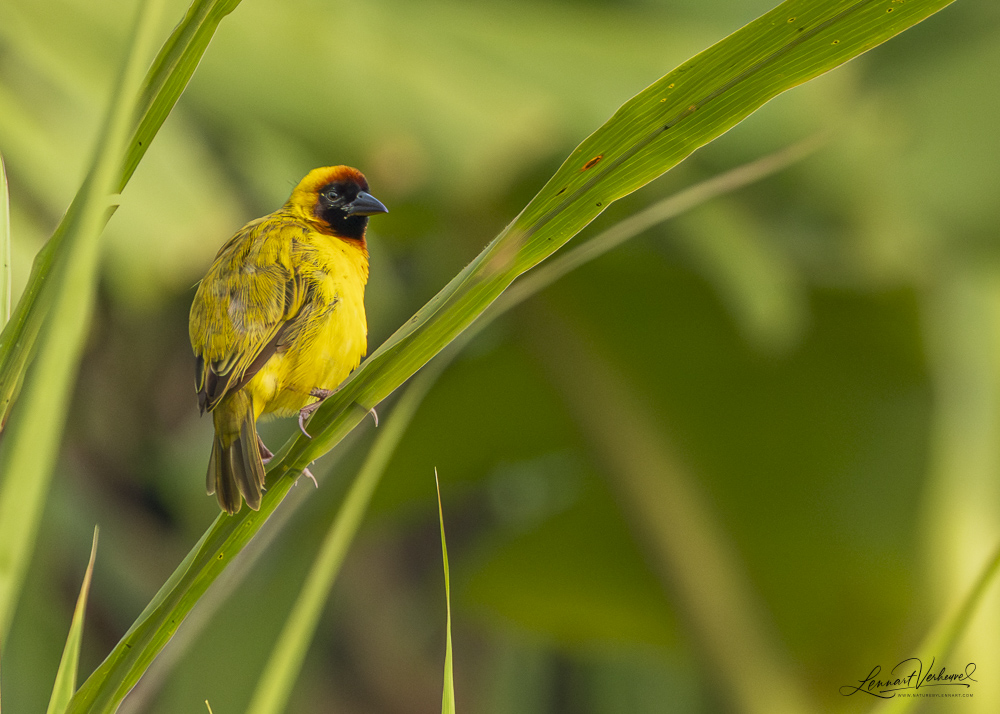
Northern Masked Weaver
After this interlude, we continued on to Semliki. Once we had settled in, it took a while before we could finally head into the forest, but luckily that was eventually arranged. Almost immediately, we could see that Semliki is truly a unique place. The forest features several hot springs—steaming pools that create a magical atmosphere in the jungle.
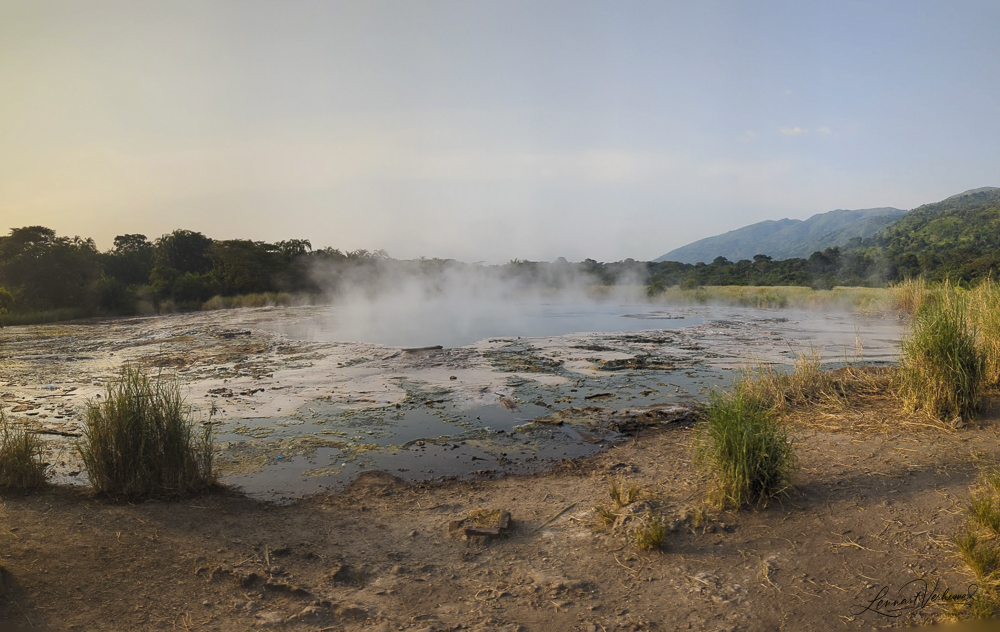
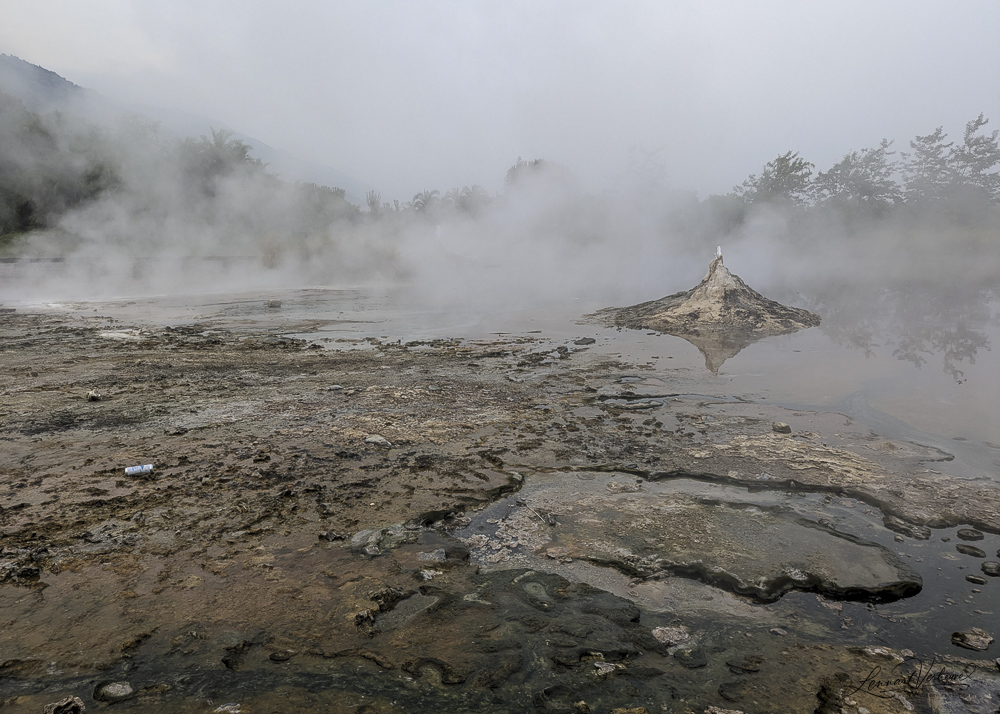
There was also a kind of savanna area right in the middle of the forest.
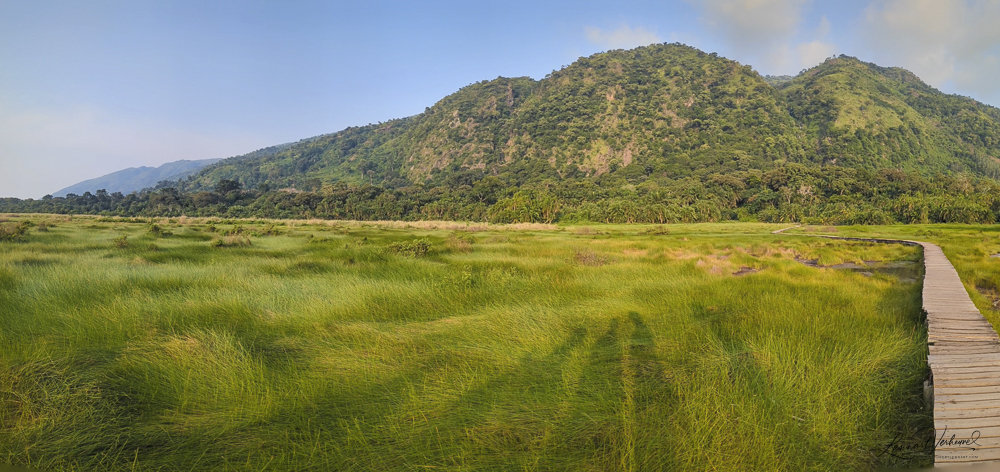
From there, we watched several African Green Pigeons looking for roosts, as well as African Olive Pigeons.
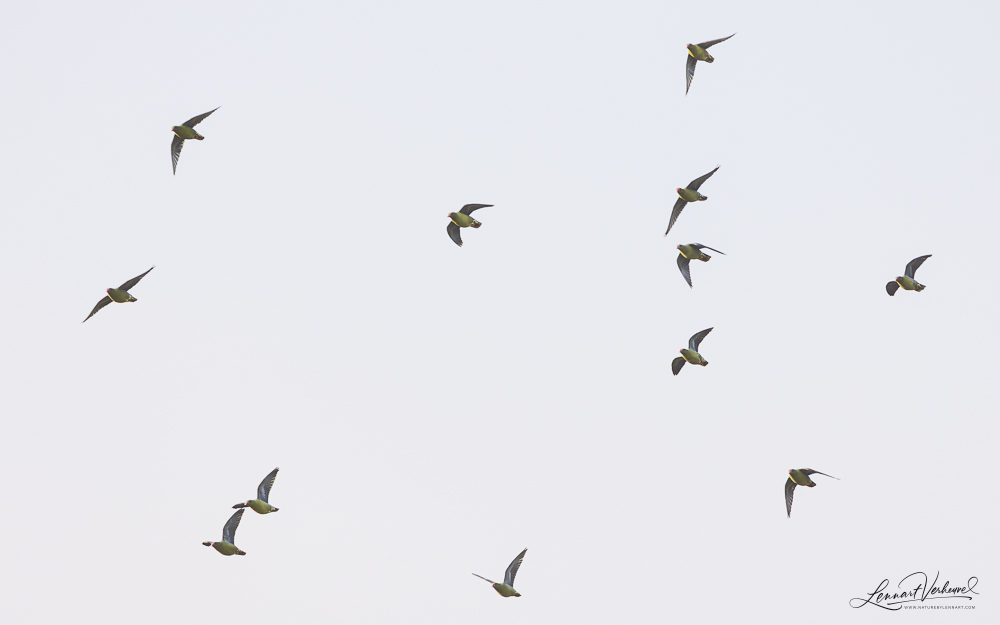
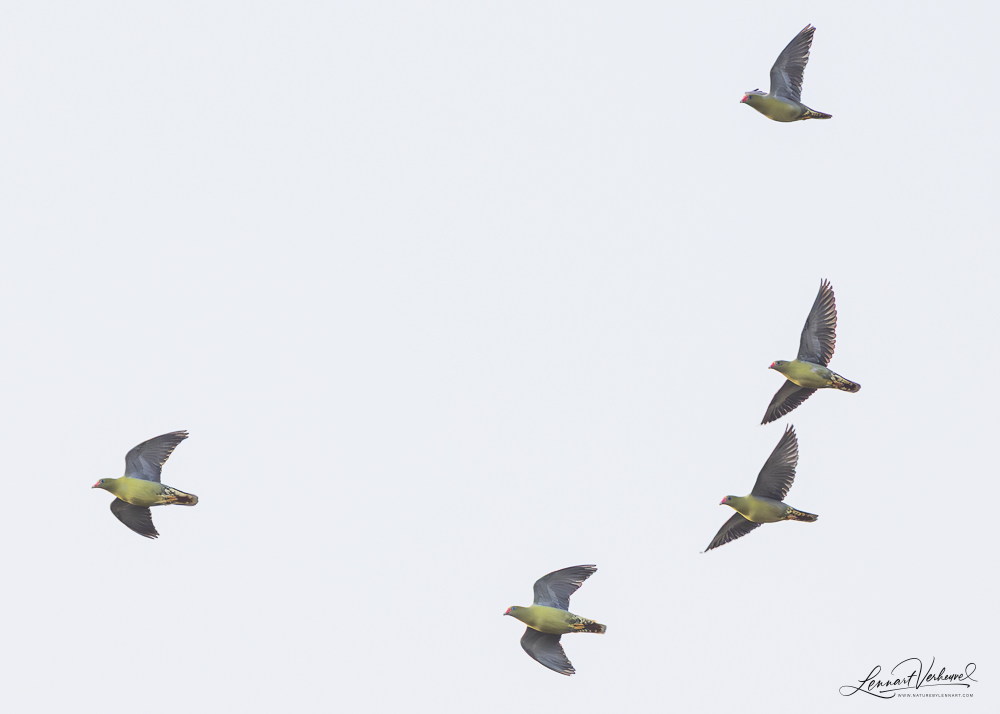
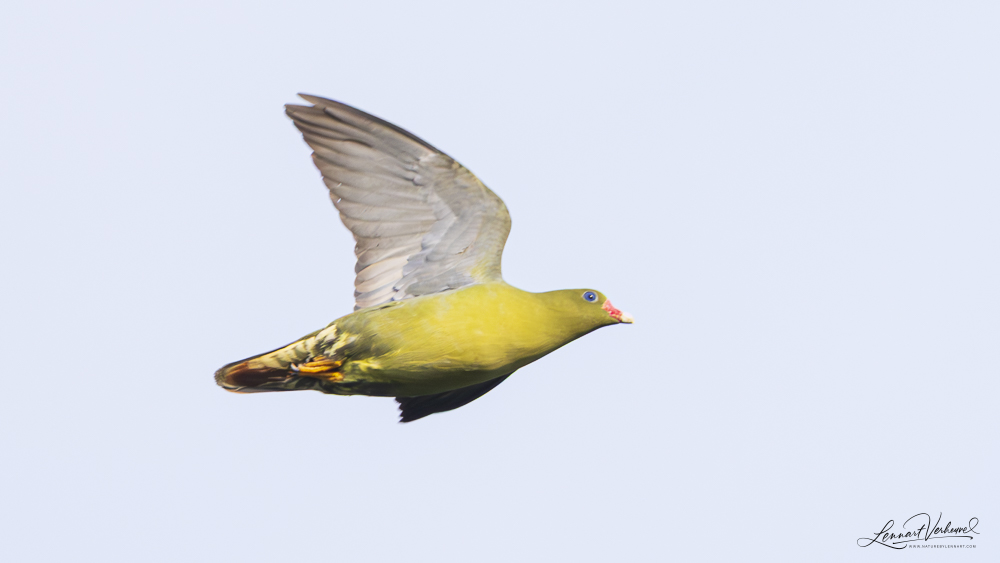
African Green Pigeon
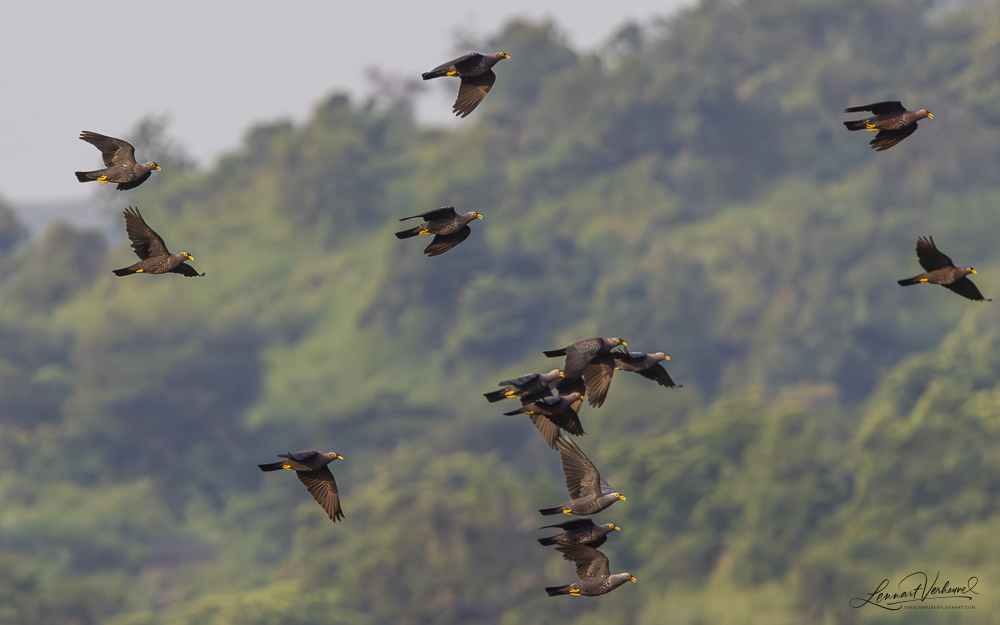
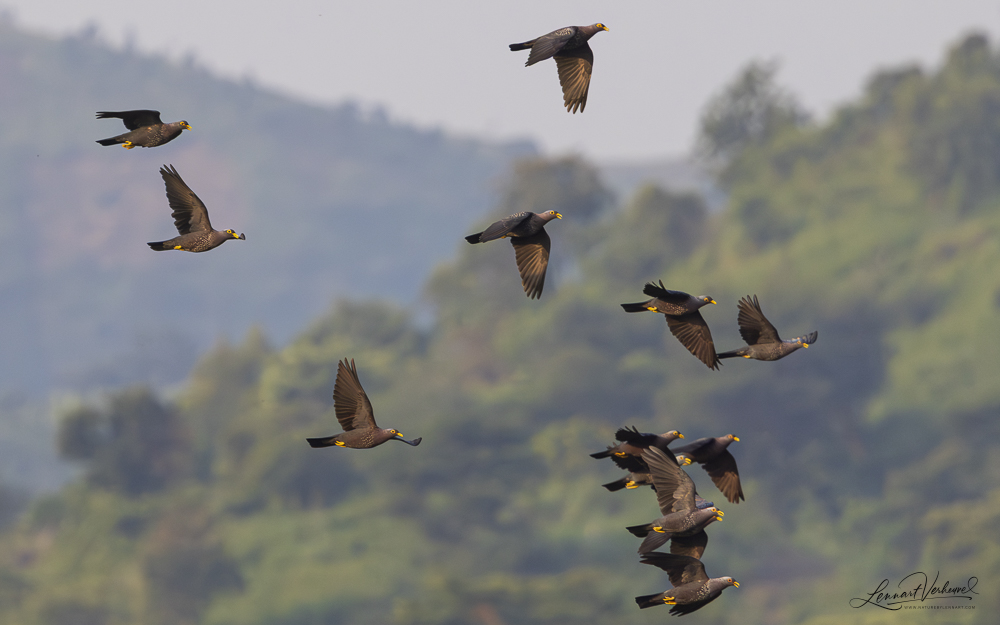
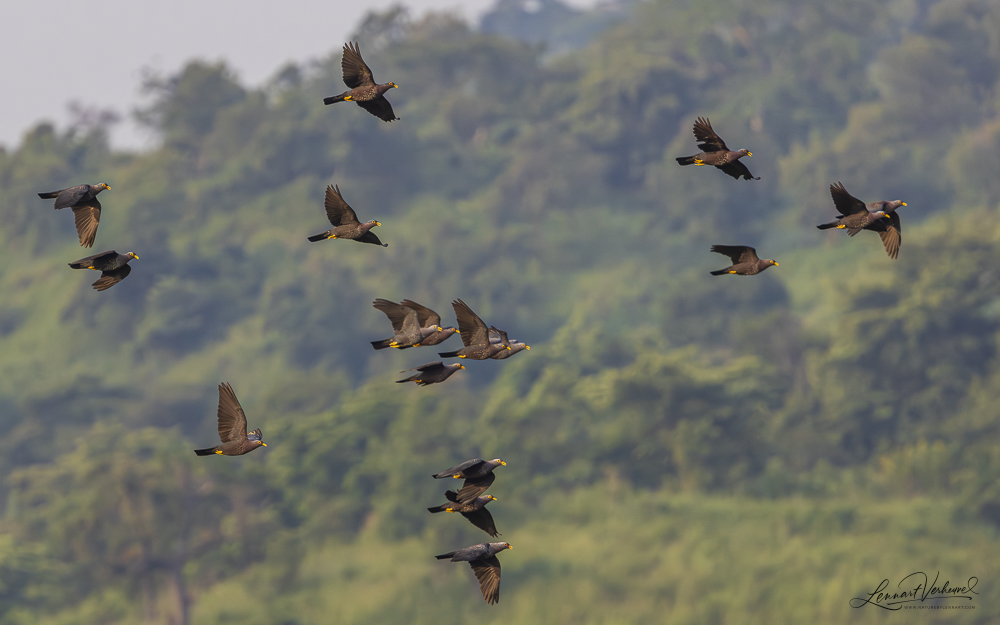
African Olive Pigeon
On an army ant swarm we found specialized species like Fraser’s Rufous Thrush, Yellow-eyed Bristlebill, and Fire-crested Alethe. My photos weren’t great, but at least I got them.
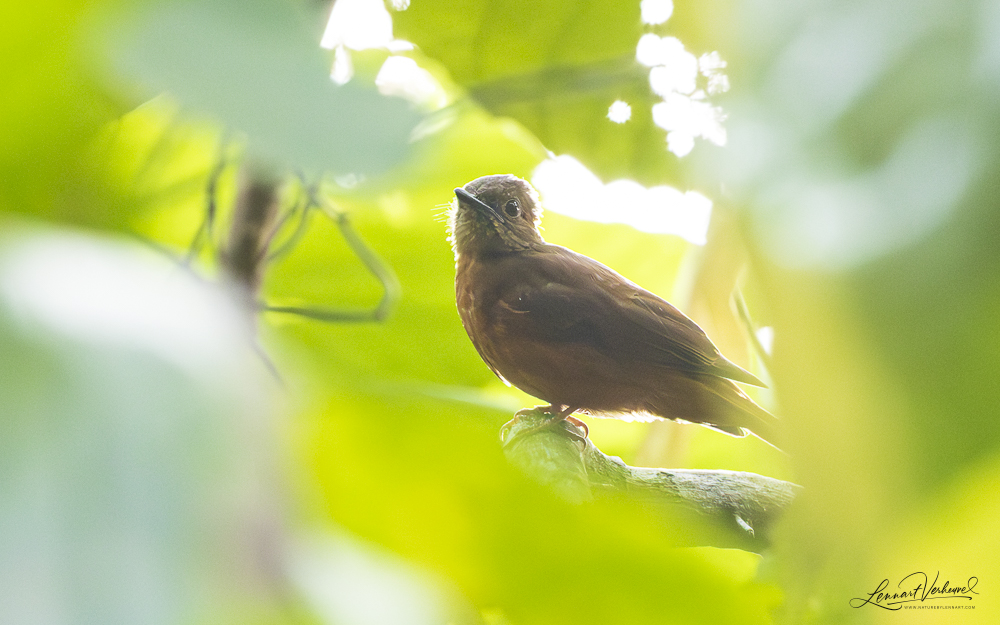
Fraser’s Rufous Thrush
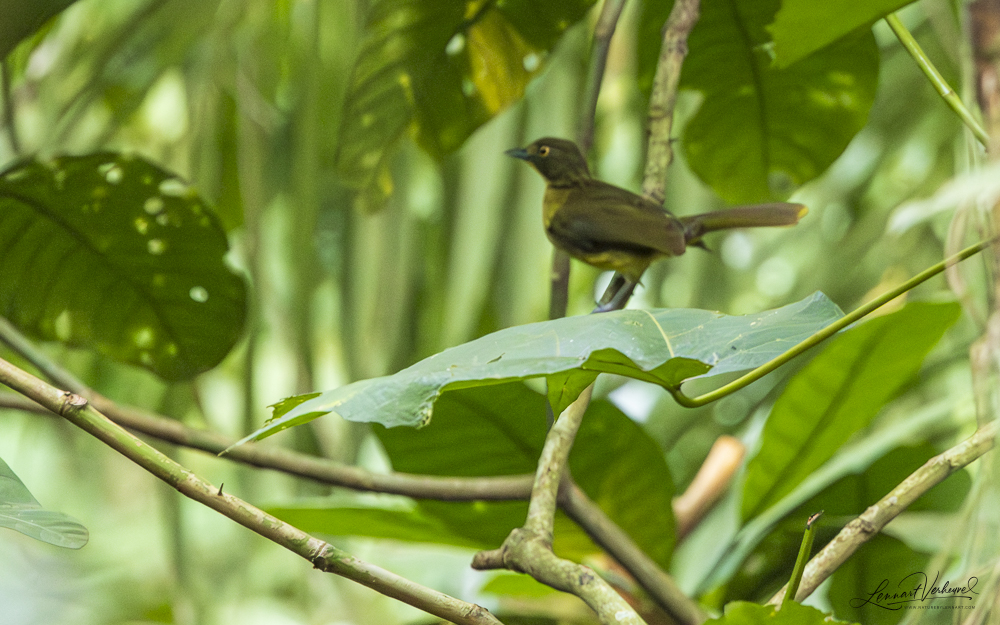
Yellow-eyed Bristlebill
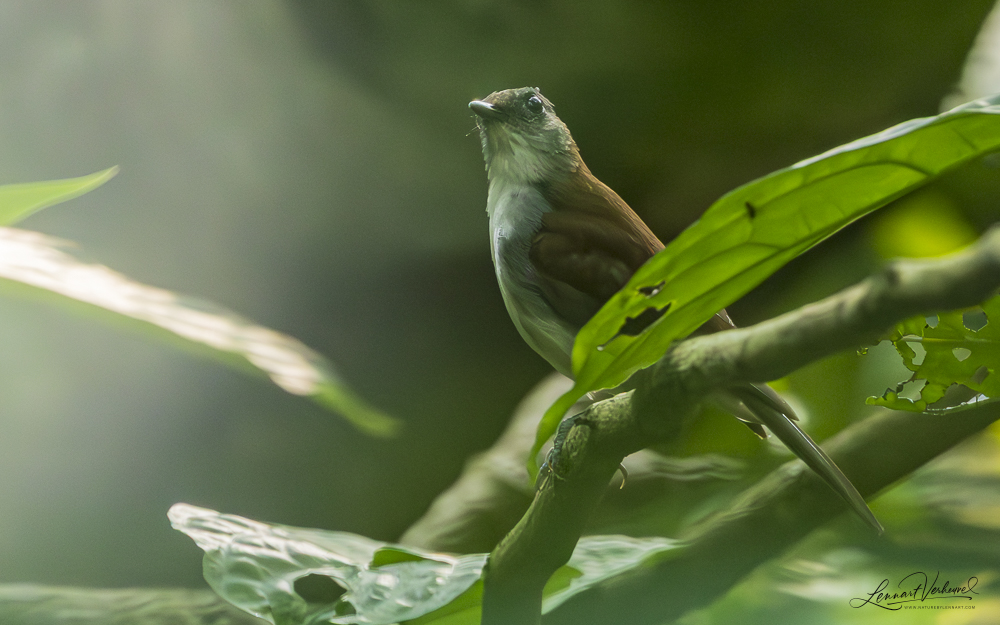
Fire-crested Alethe
All of this, of course, was just a warm-up for the next day when we would really head into the forest. My guide also pointed out a hollow tree where a Lord Derby’s Anomalure was supposed to be roosting. It sounded almost too good to be true—and indeed, the animal wasn’t inside that day. But the guide seemed quite confident, explaining that the Anomalure regularly roosts there and had probably just been disturbed by the many schoolchildren visiting that day.
For me, the Anomalure was a very important mammal to see. I’ve already seen several flying squirrels, but the anomalures are truly something different. The principle is similar: a squirrel-like creature with skin flaps between its legs allowing it to glide. But anomalures belong to a completely different suborder, more closely related to springhares than to flying squirrels or “regular” squirrels. Genetically fascinating—and since I already have a soft spot for gliding mammals, I was determined to see this one. But not that day!
The following day, we returned to the same spot. We visited the hot springs again, but didn’t find the De Brazza’s Monkeys I was hoping for. We crossed the savanna zone to reach another hot spring, which was also rather quiet.
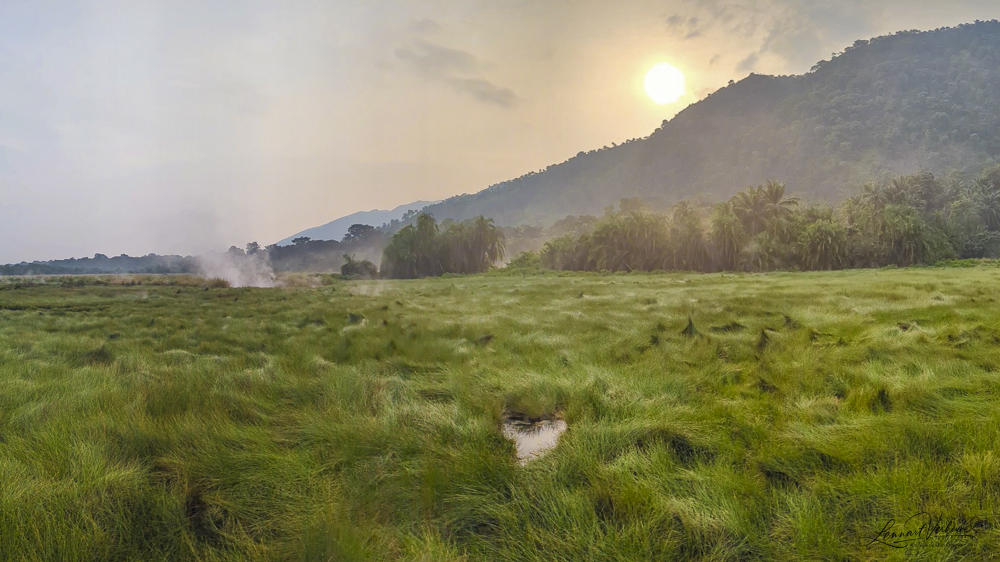
On the way back, however, we suddenly spotted a family of De Brazza’s Monkeys in the palm trees! We had wonderful views and I was thrilled with this beautiful new primate species.
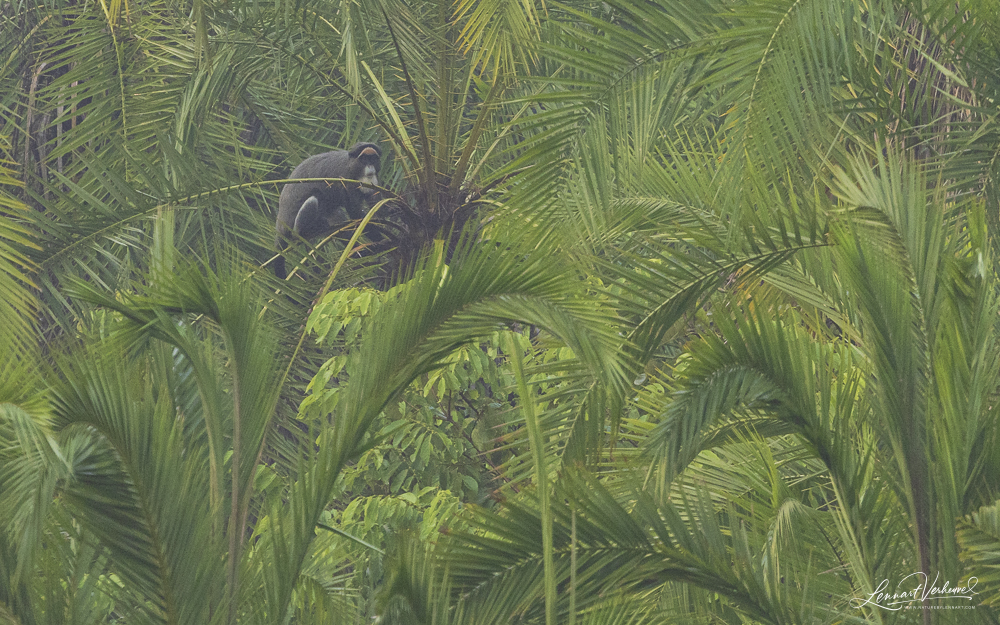
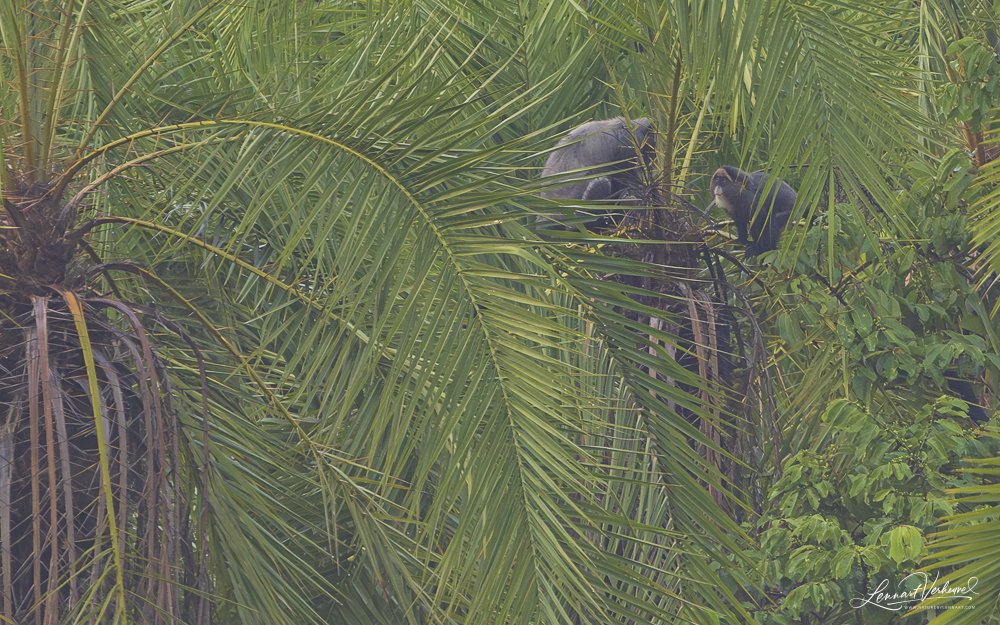
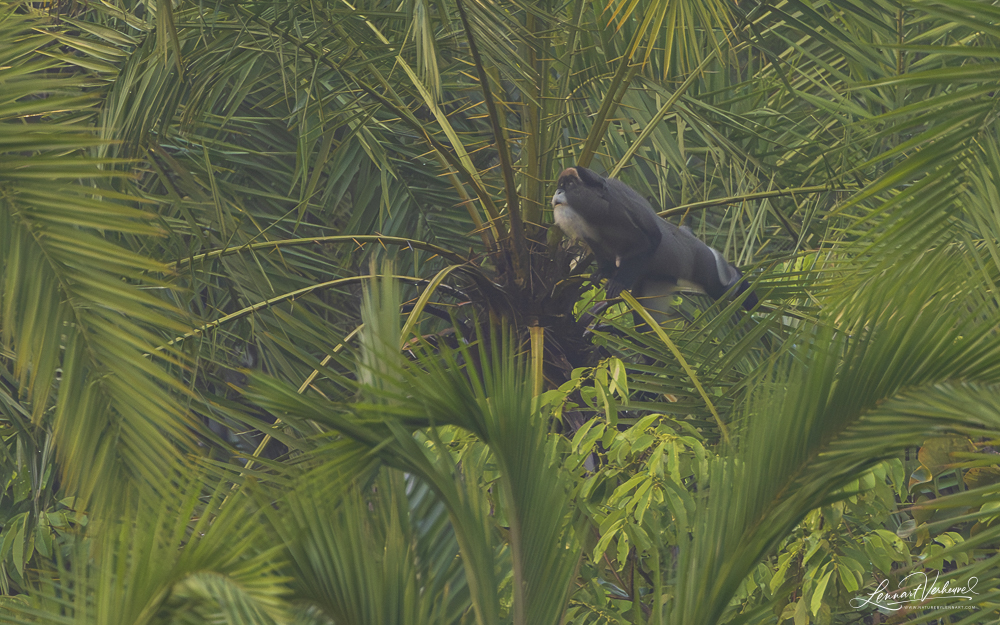
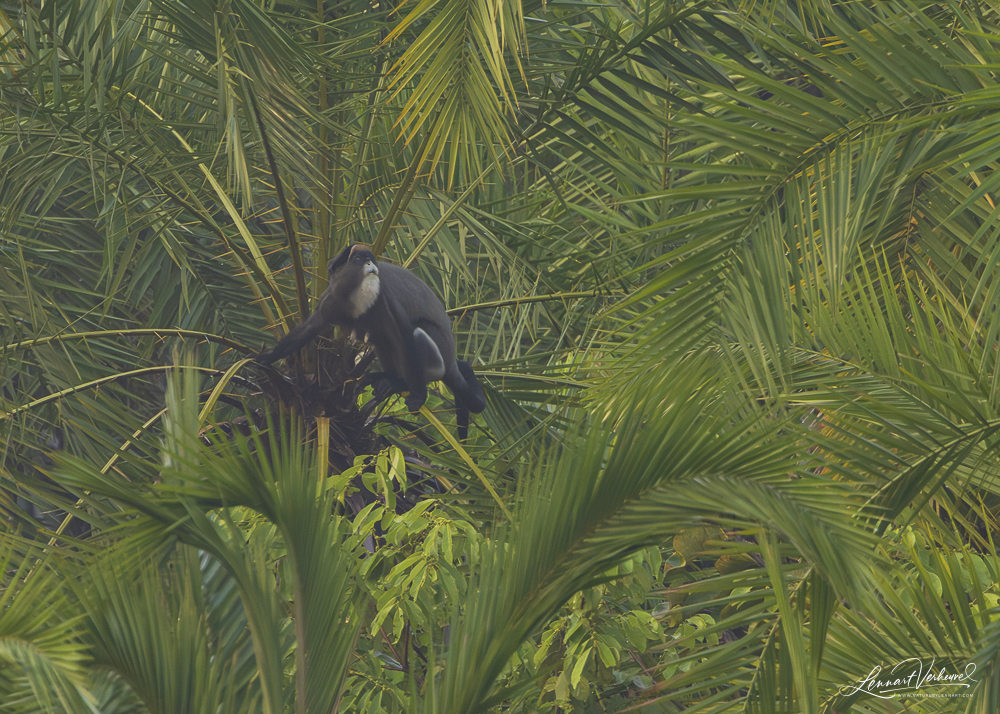
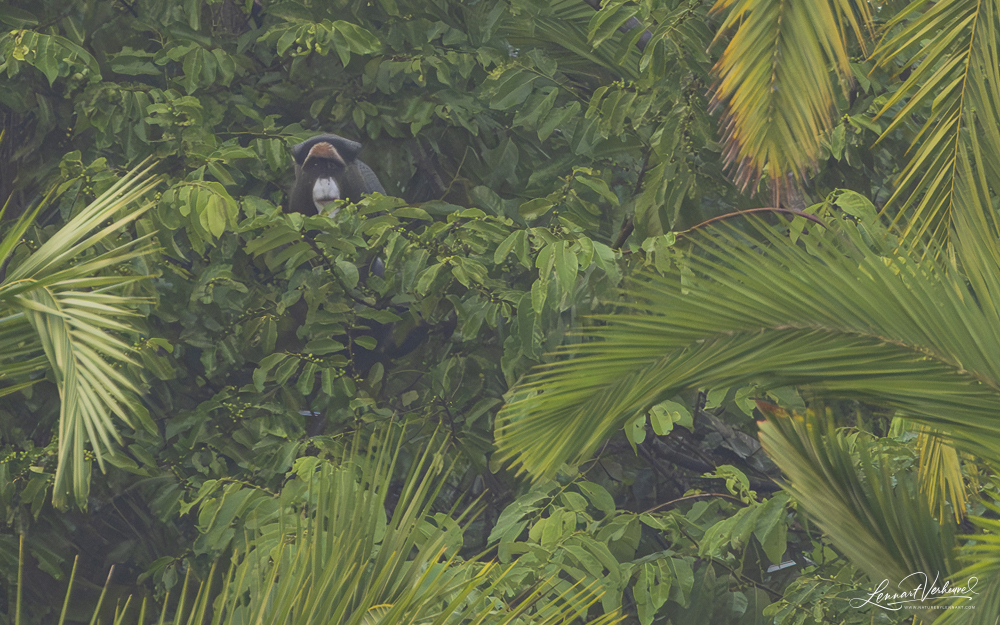
De Brazza’s Monkey
Of course, we also had to check that hollow tree for the Anomalure again. I first looked with my thermal scope and could see that something was indeed inside. Excitedly, I switched to my flashlight, only to feel a pang of disappointment when I spotted two bats hanging there.
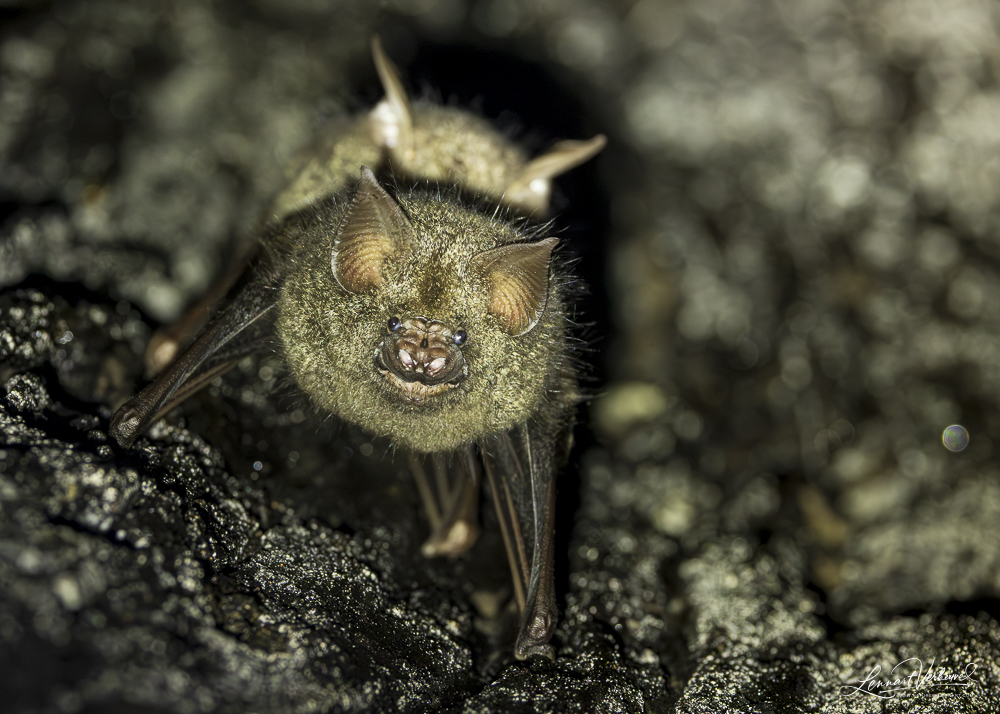
Cyclops Roundleaf Bat
But I hadn’t looked carefully enough! A few meters above the bats, the Lord Derby’s Anomalure was there after all! It was sitting quietly, and we had excellent views from below. After everyone had a look and snapped some record shots, we left it in peace. What a fantastic start to the day!
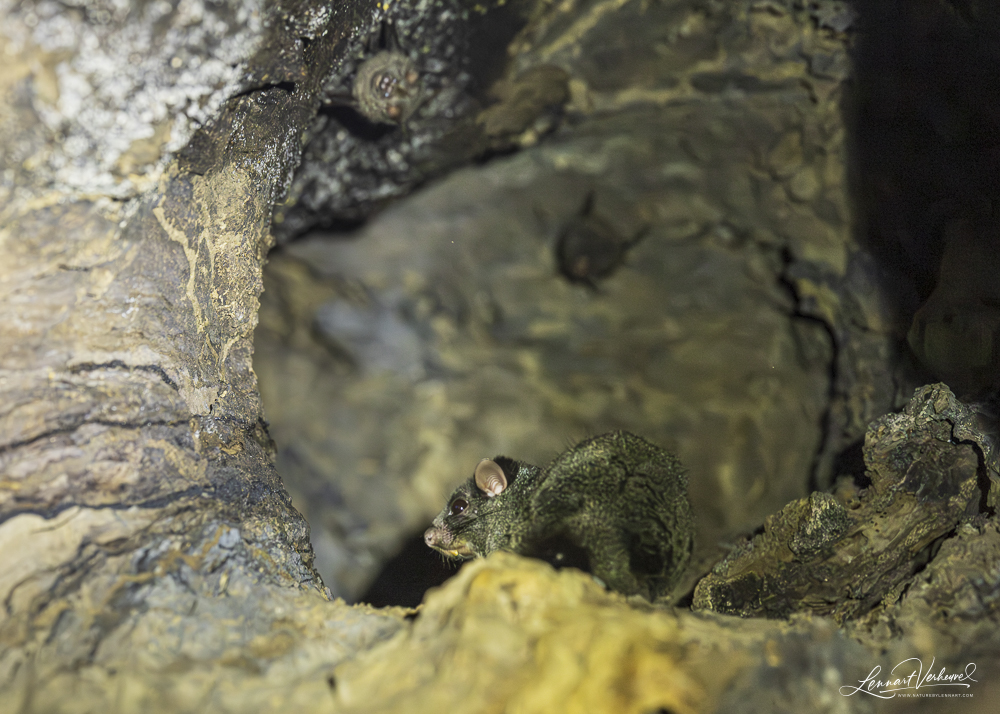
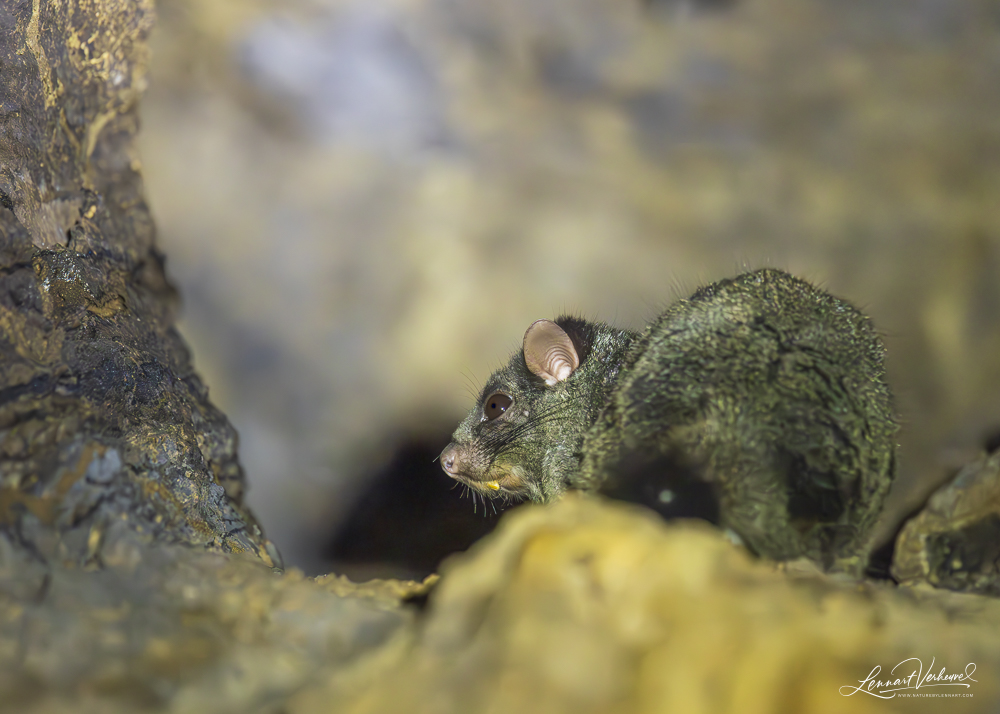
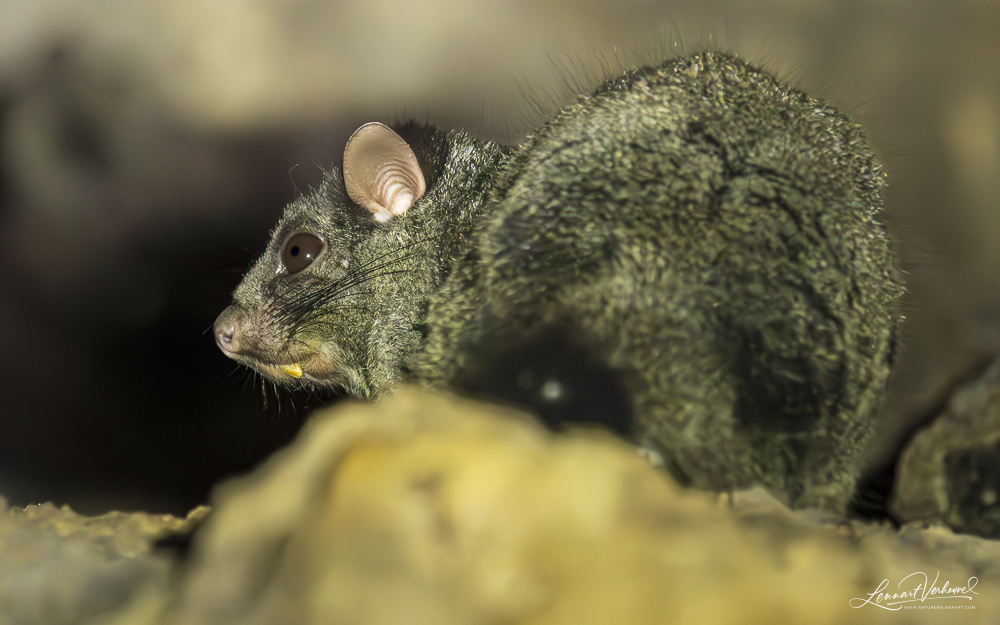
Lord Derby’s Anomalure
From there, we headed deeper into the forest for a longer trek. As we walked the trail, suddenly a family of Alexander’s Cuisimanse darted across. This mongoose species has a very localized distribution, so it was a great find—though I didn’t see them very well. Still, a promising start.
Birding also went well. We saw Yellow-throated Nicator, a must-see here.
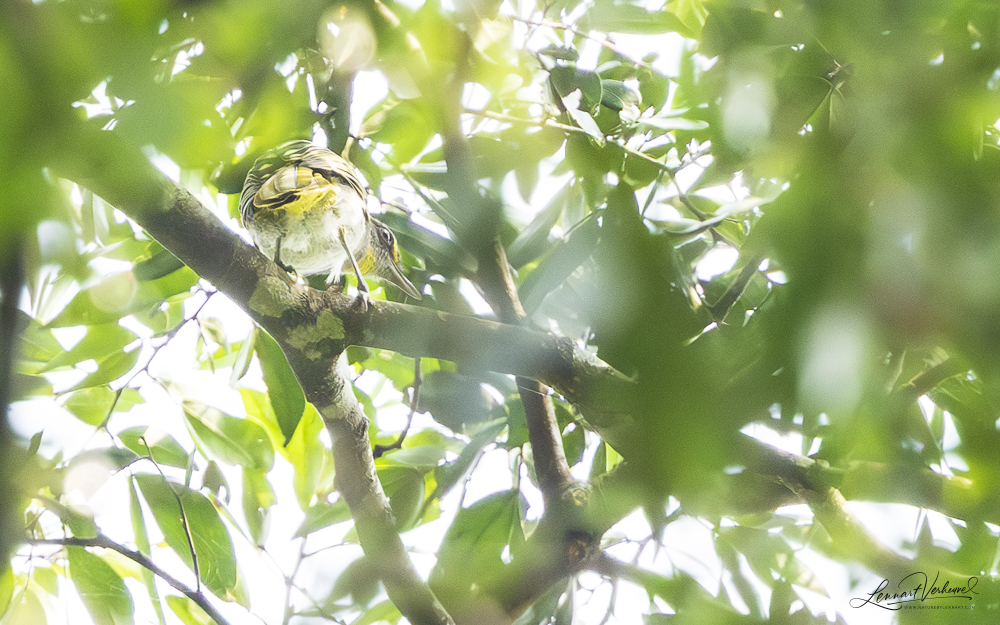
Yellow-throated Nicator
We also enjoyed great views of a stunning male Yellow-throated Cuckoo, with a Blue-throated Roller perched in the same tree. We’d already seen the roller before in Kibale, but of course we didn’t mind another sighting.
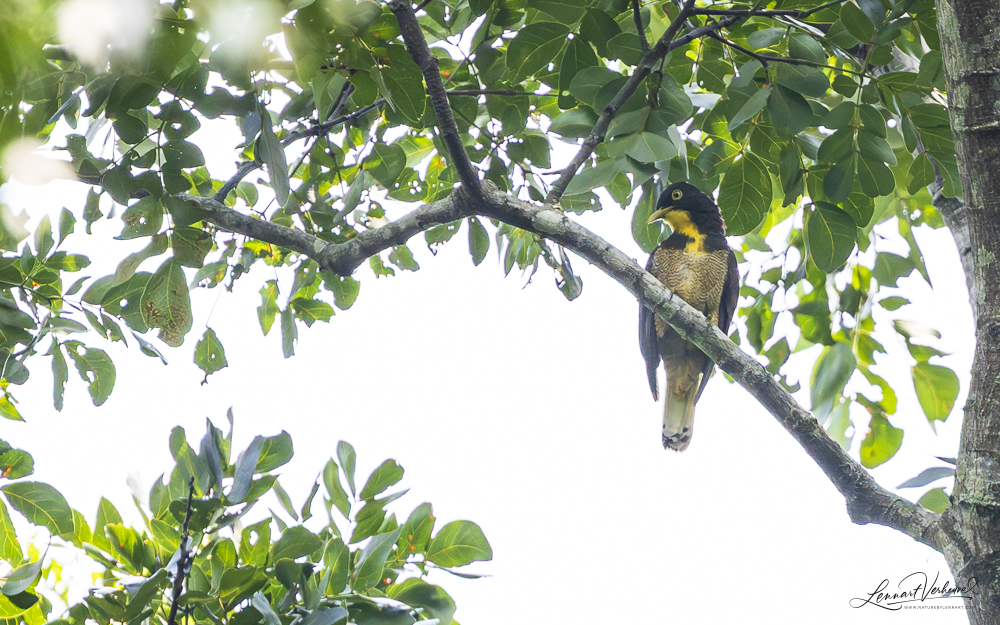
Yellow-throated Cuckoo
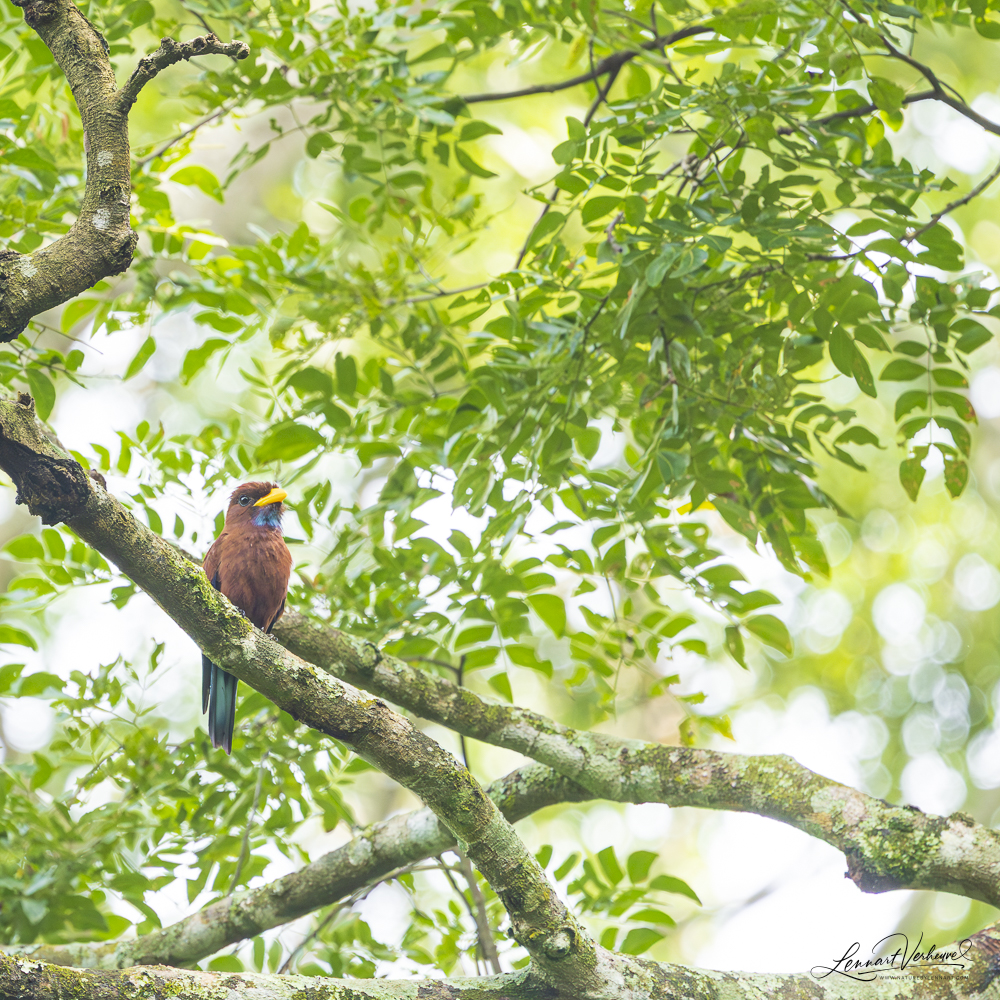
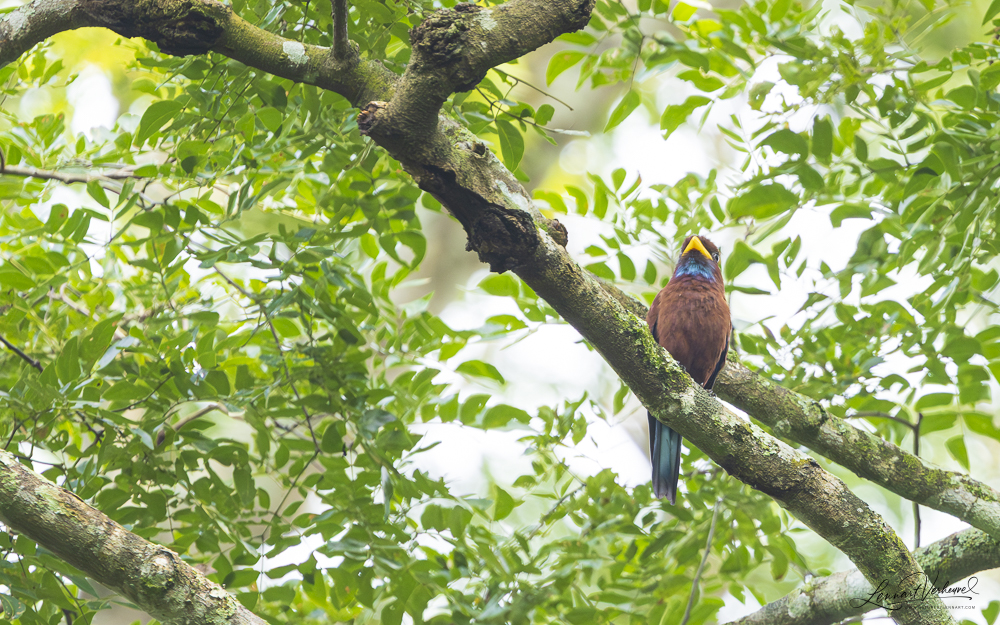
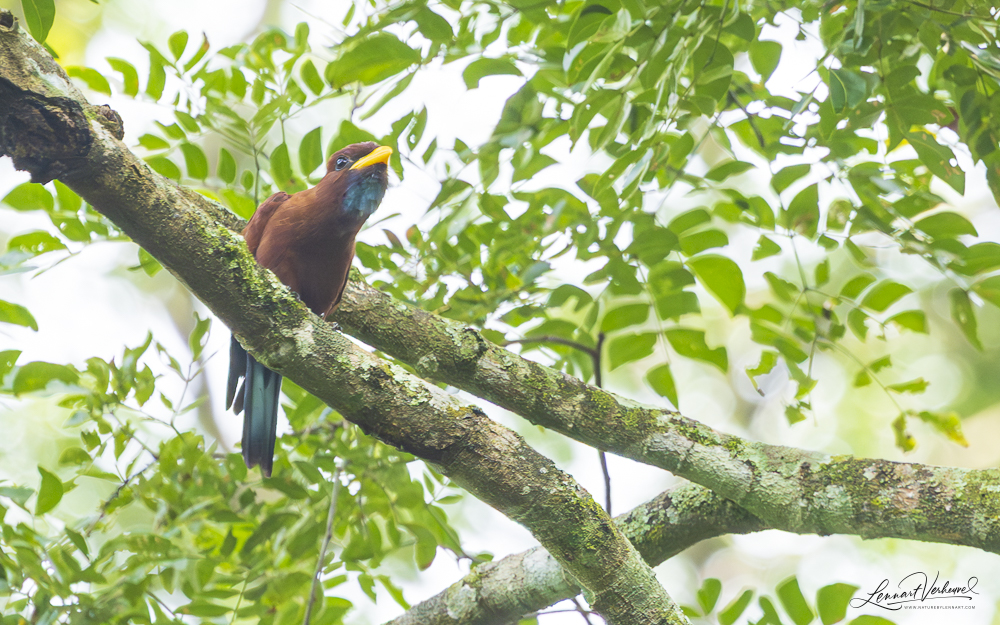
Blue-throated Roller
Another highlight was finally a visual of Dusky Long-tailed Cuckoo. This species is often heard but seldom seen.
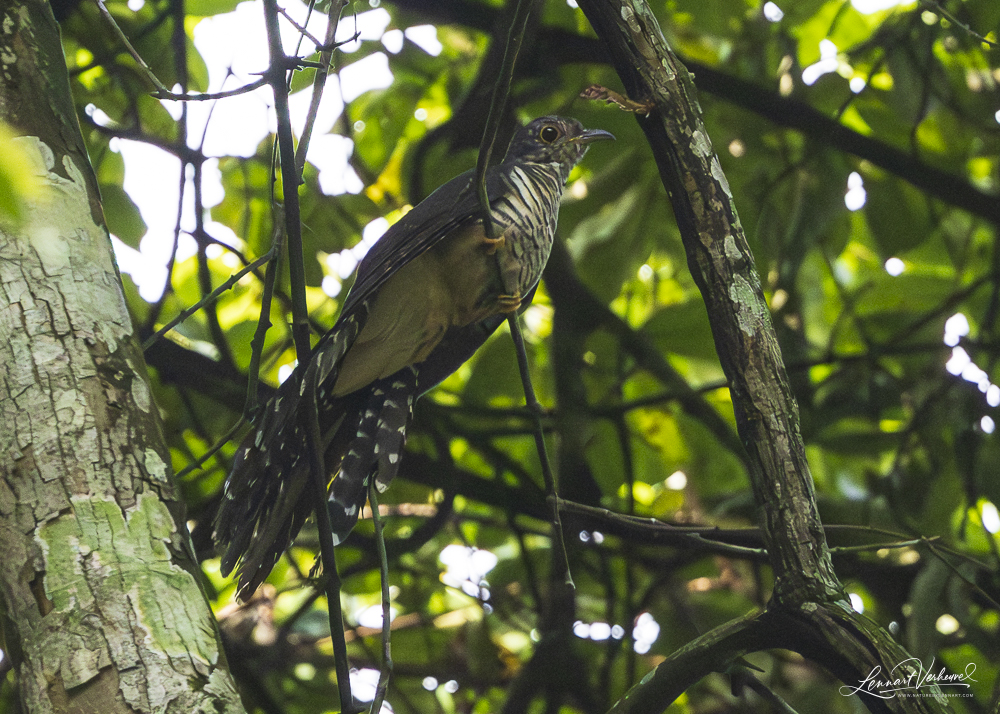
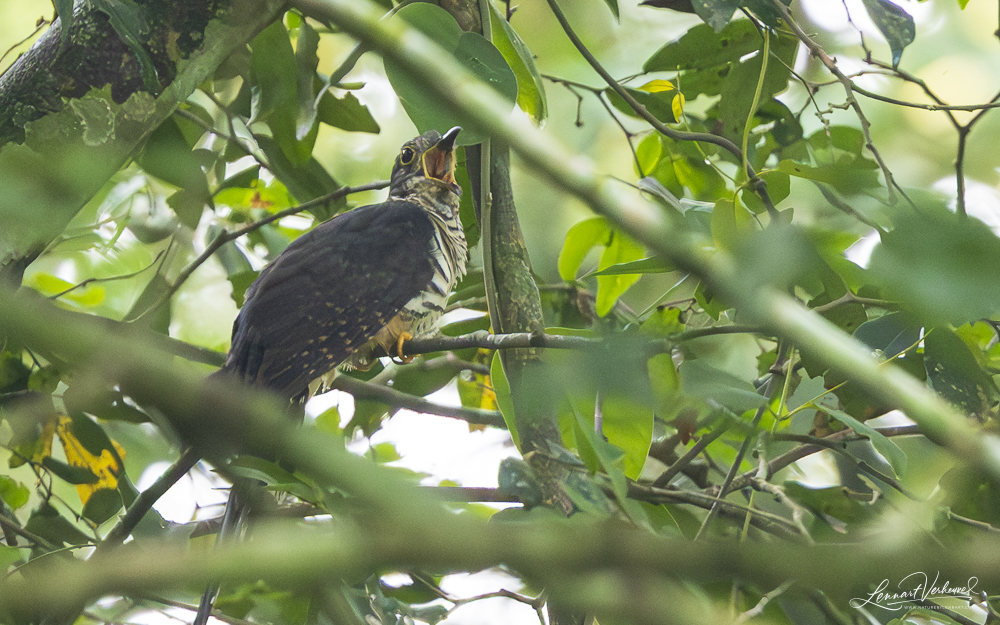
Dusky Long-tailed Cuckoo
We kept adding more birds, and one that deserves special mention is the White-bellied Kingfisher. At first glance, it looks somewhat like our familiar European Kingfisher or the locally common Malachite Kingfisher, but this species is specialized for tiny pools and narrow streams deep in the jungle. That makes it unpredictable—rain showers can completely change where it shows up.
Fortunately, our guide Alex knew a reliable spot. Sure enough, as we descended to the water’s edge, a White-bellied Kingfisher flew in! We admired it as it caught a fish, and I took plenty of photos. To top it off, it turned out to be the subspecies leopoldi, of which there are very few good photos. We were delighted!
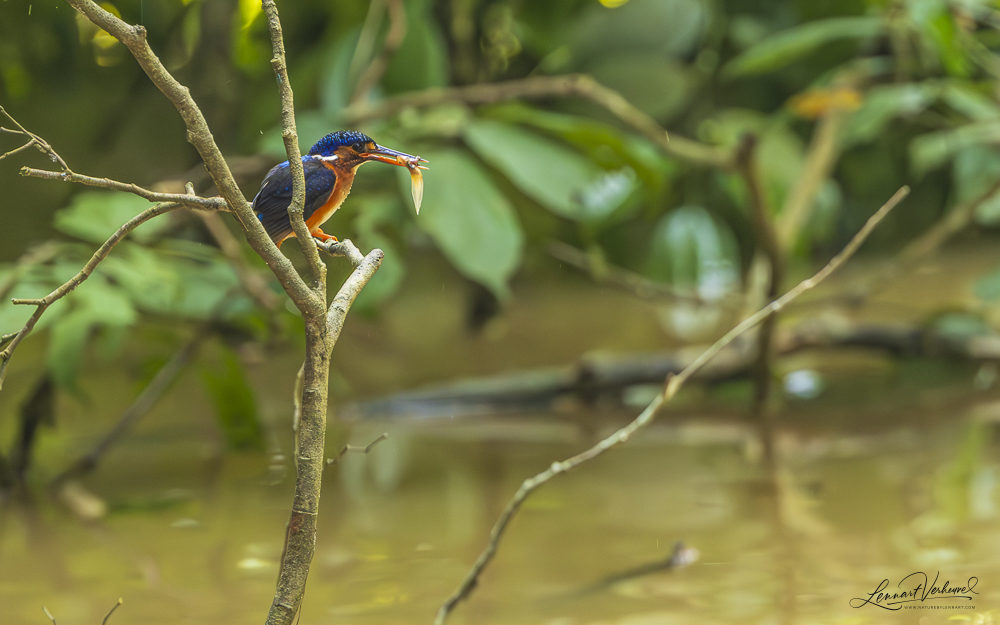
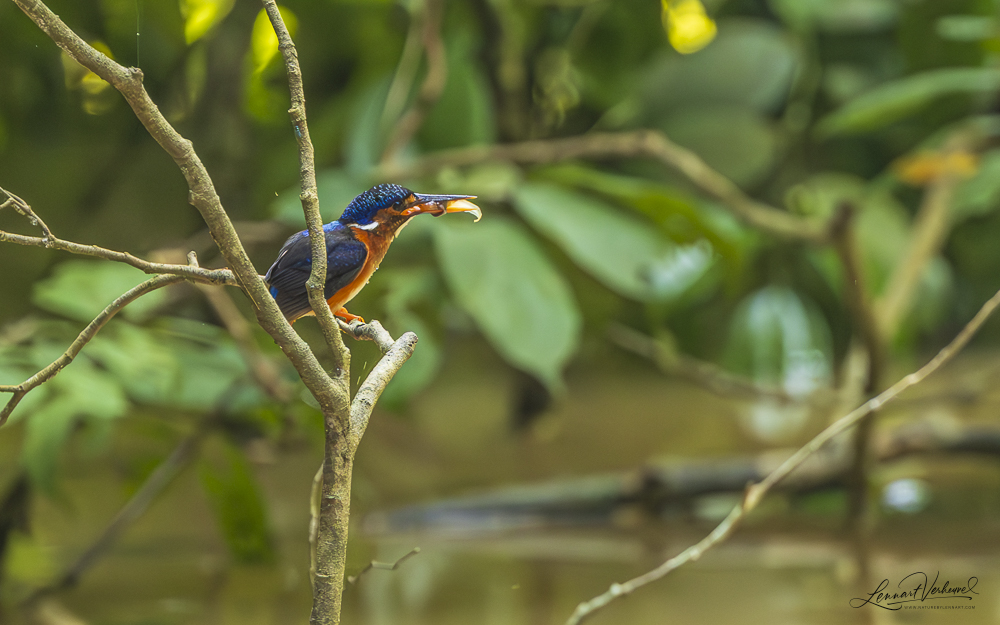
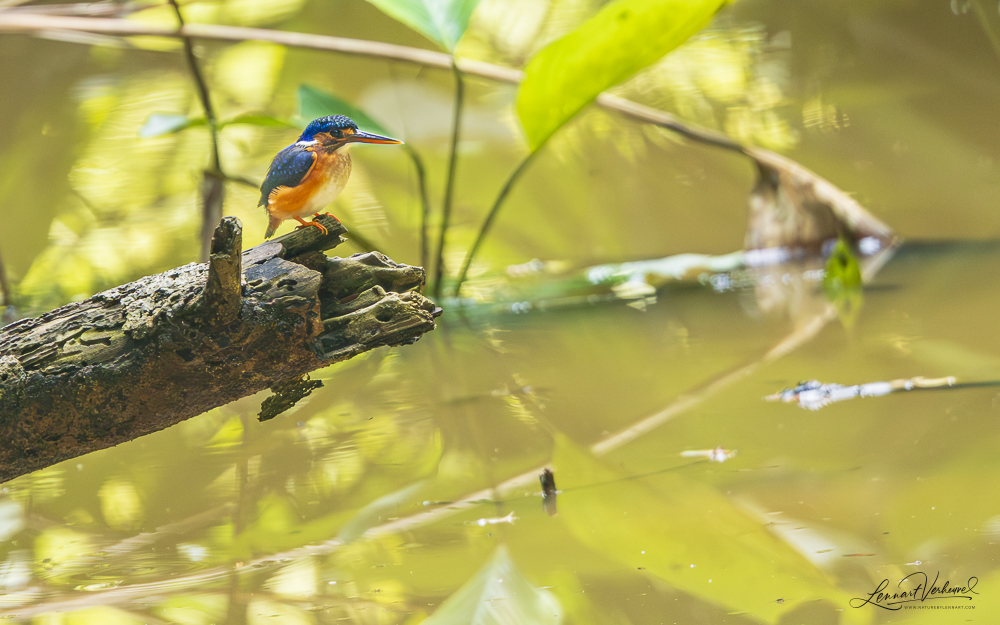
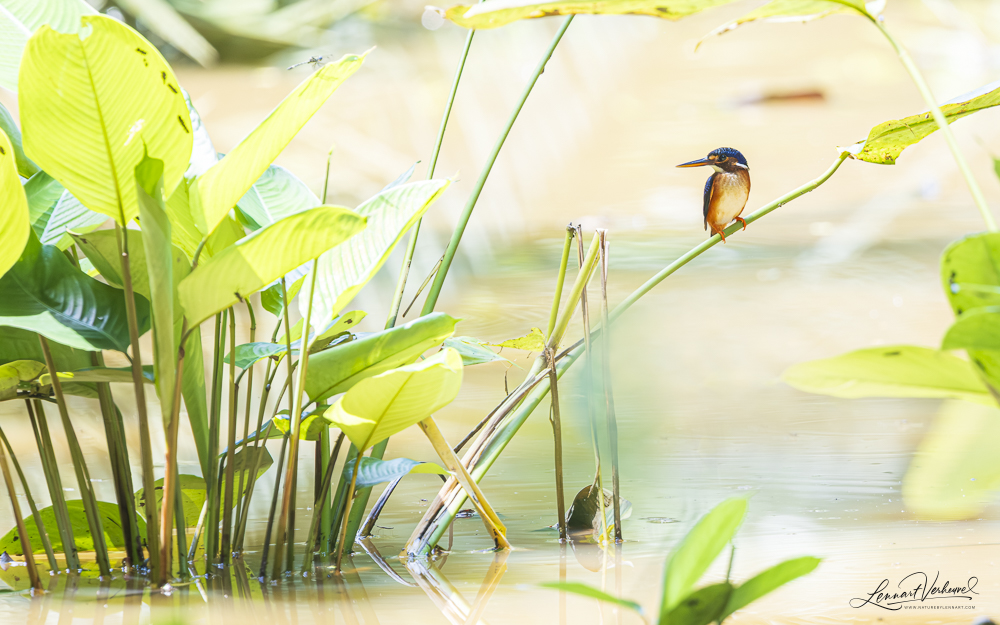
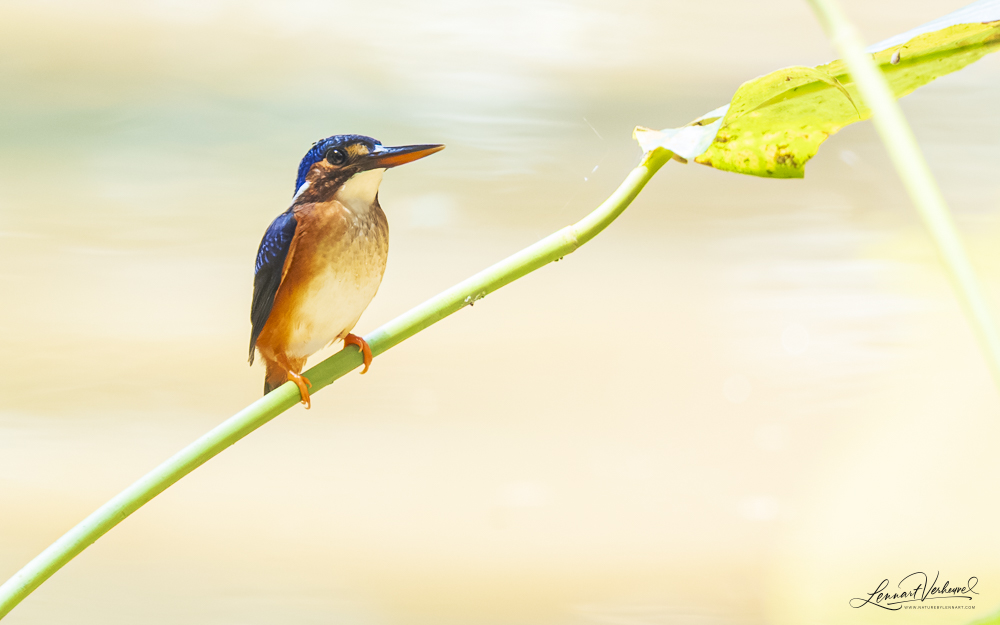
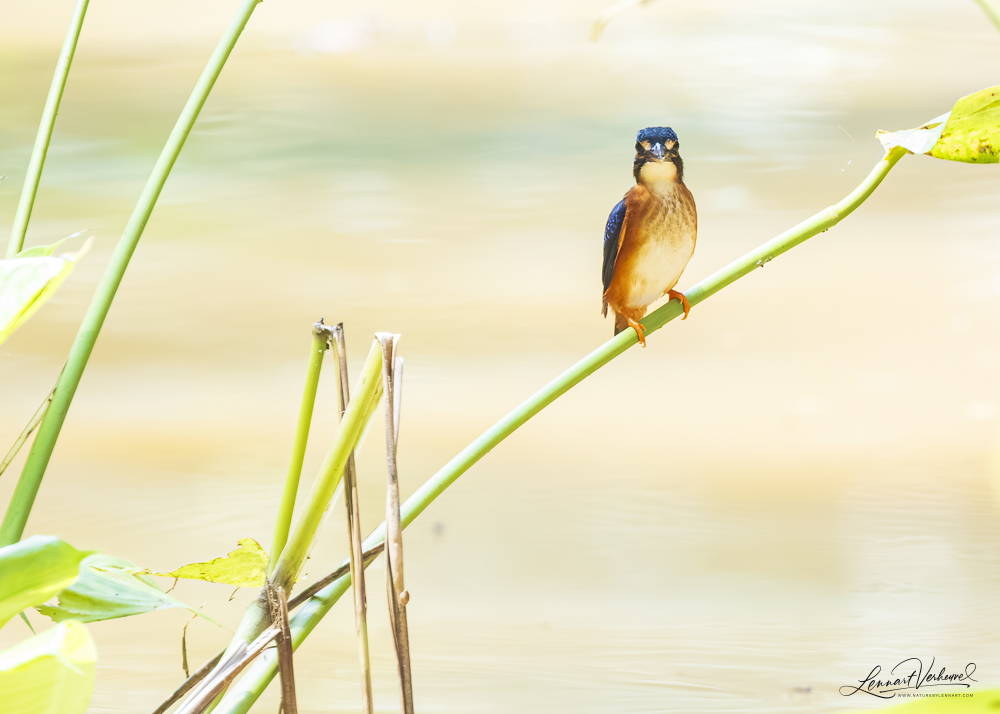

White-bellied Kingfisher
At an oxbow lake we found another much-desired mammal: Dent’s Monkey. I spotted it high in a tree and had great views. Sadly, we would not encounter Semliki Red Colobus, but overall we were very satisfied with the day.
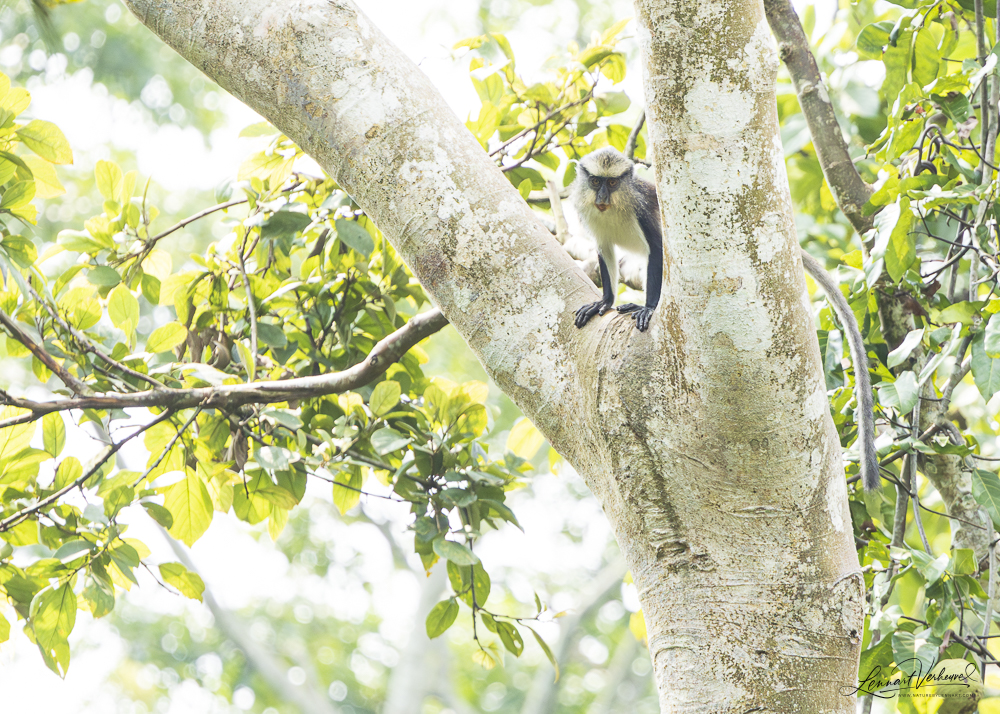
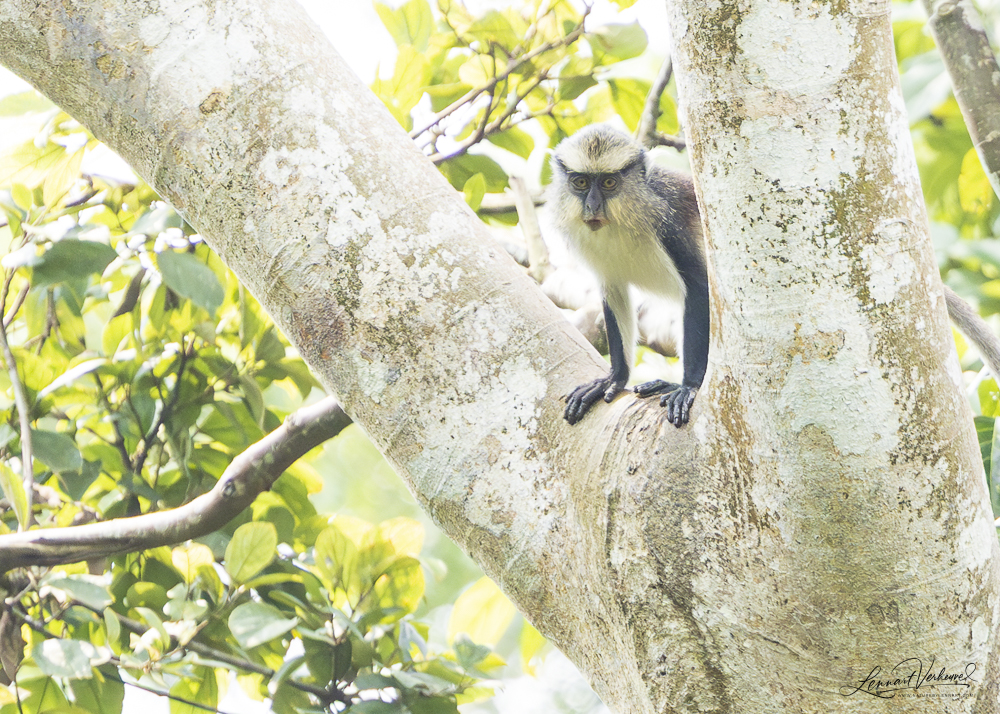
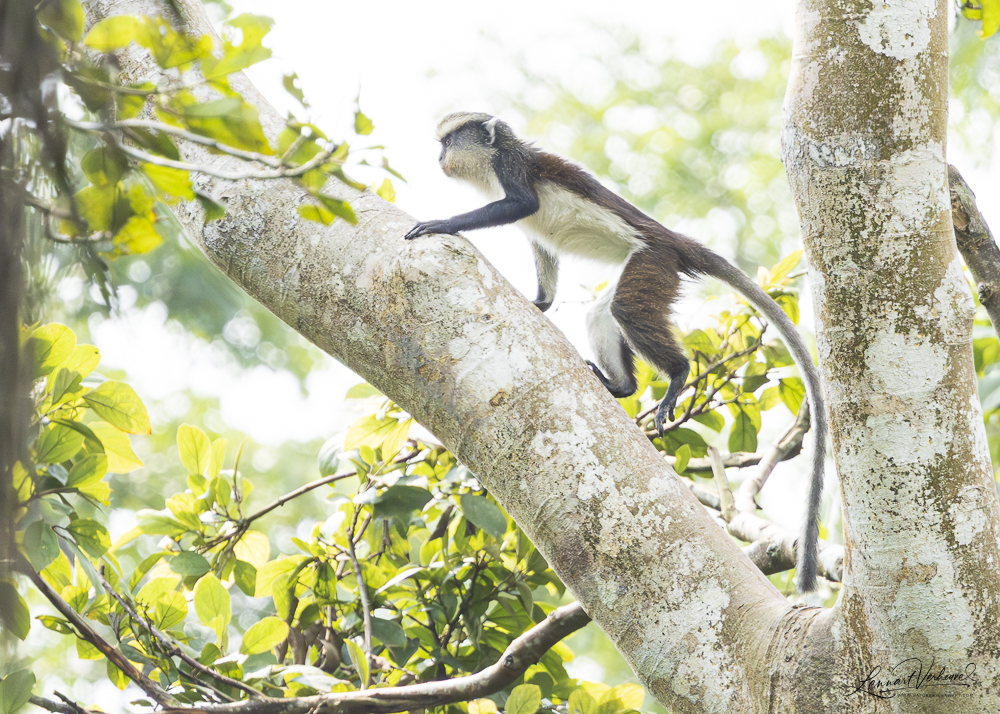
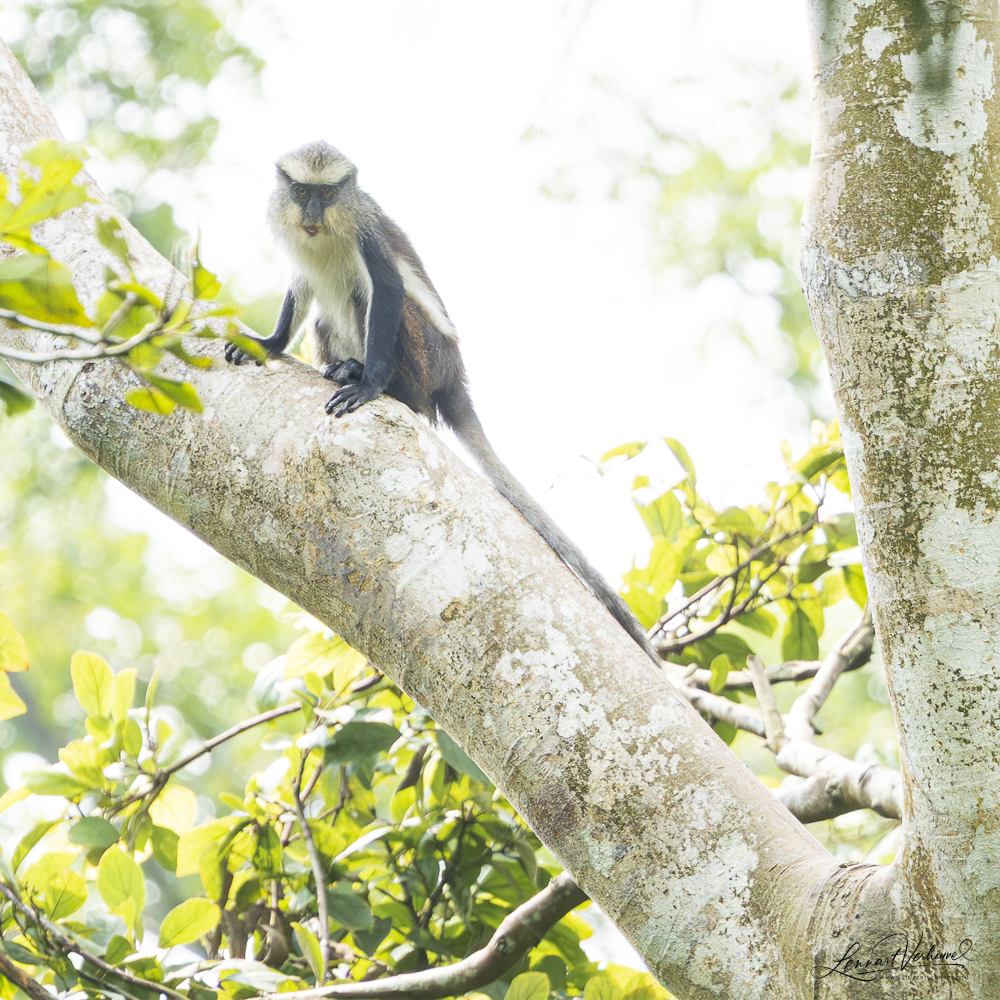
Dent’s Monkey
One particularly cool sighting, though unphotographed, was Bates’s Nightjar. This bird is decidedly uncommon, and this was the only place we had a chance to see it. Alex had even found one on previous days! On our way in we missed it, but on the way back, as Alex searched quietly through the forest, suddenly a huge nightjar flew right over the trail! It hovered briefly before disappearing into the trees. Alex had unknowingly flushed it, but we were thrilled that it flew across the path in front of us.
On the way back, we also encountered a large group of Uganda Mangabeys mixed with Dent’s Monkeys. I’d already seen both species, but of course we welcomed more sightings.
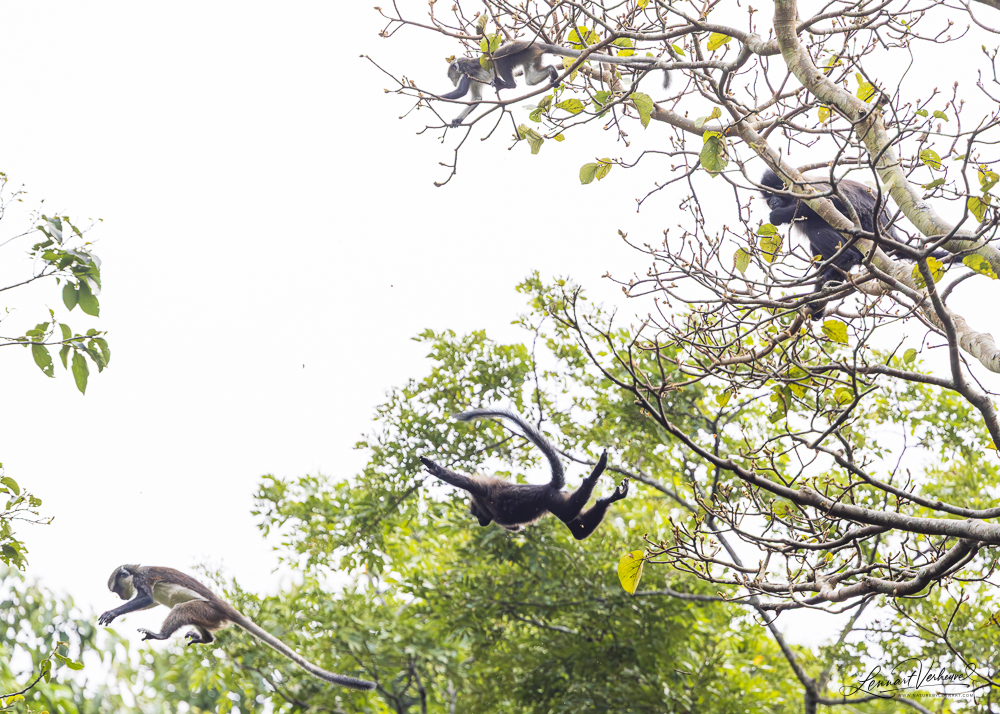
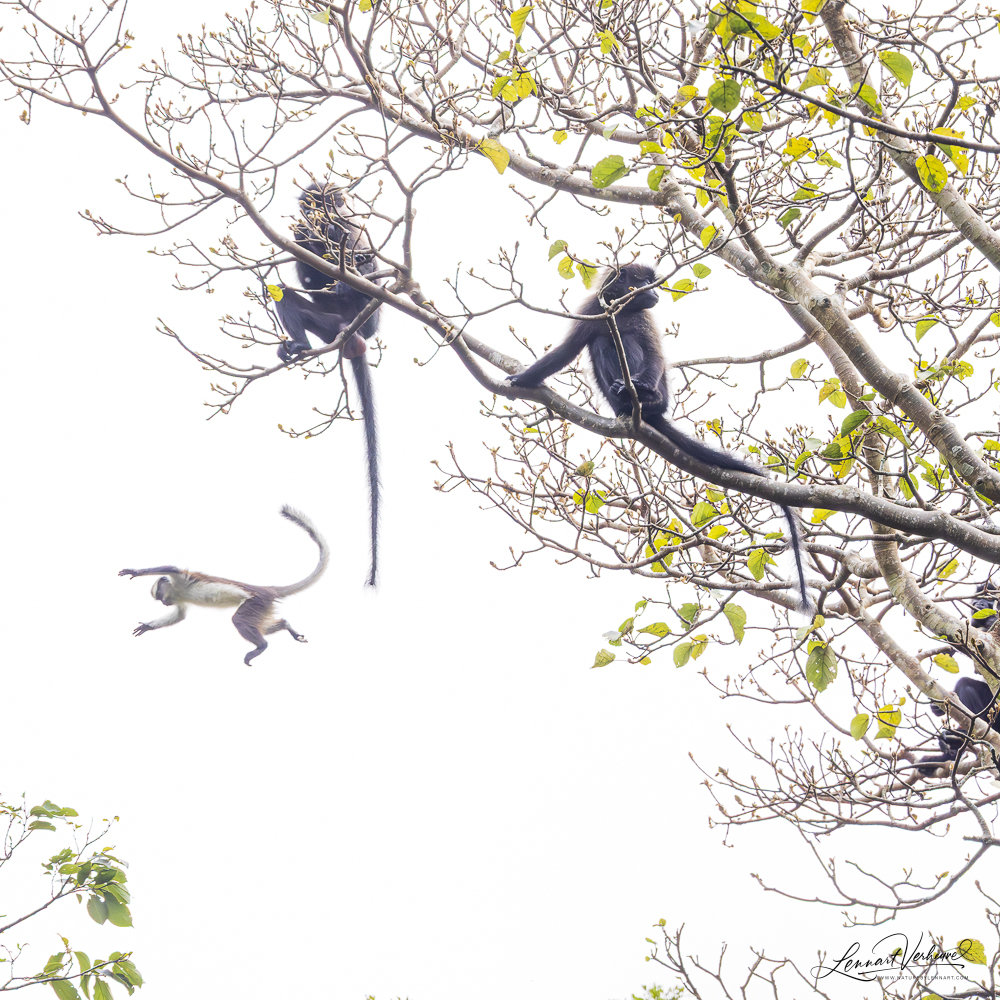
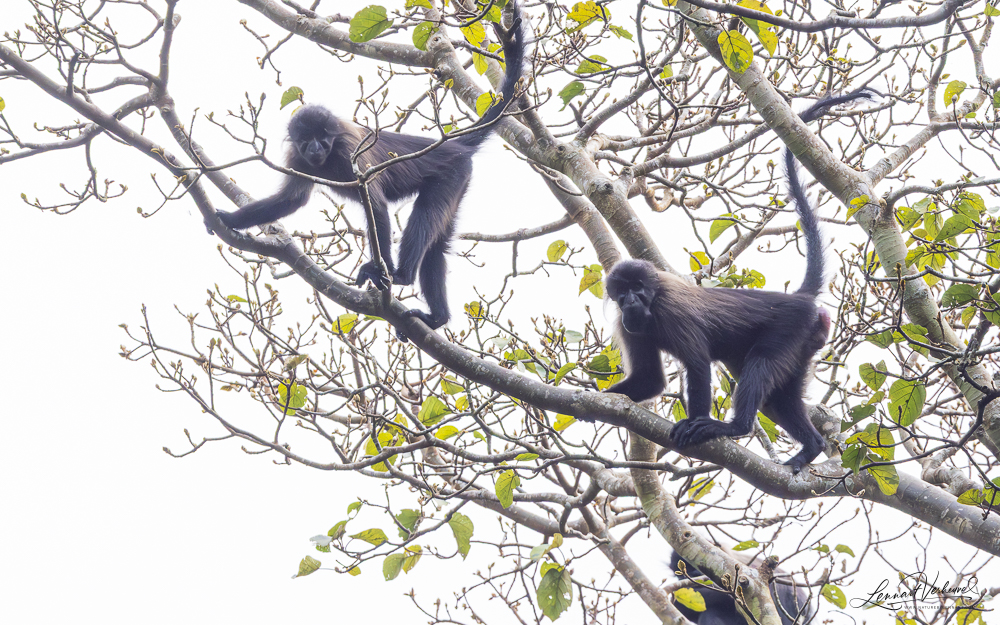
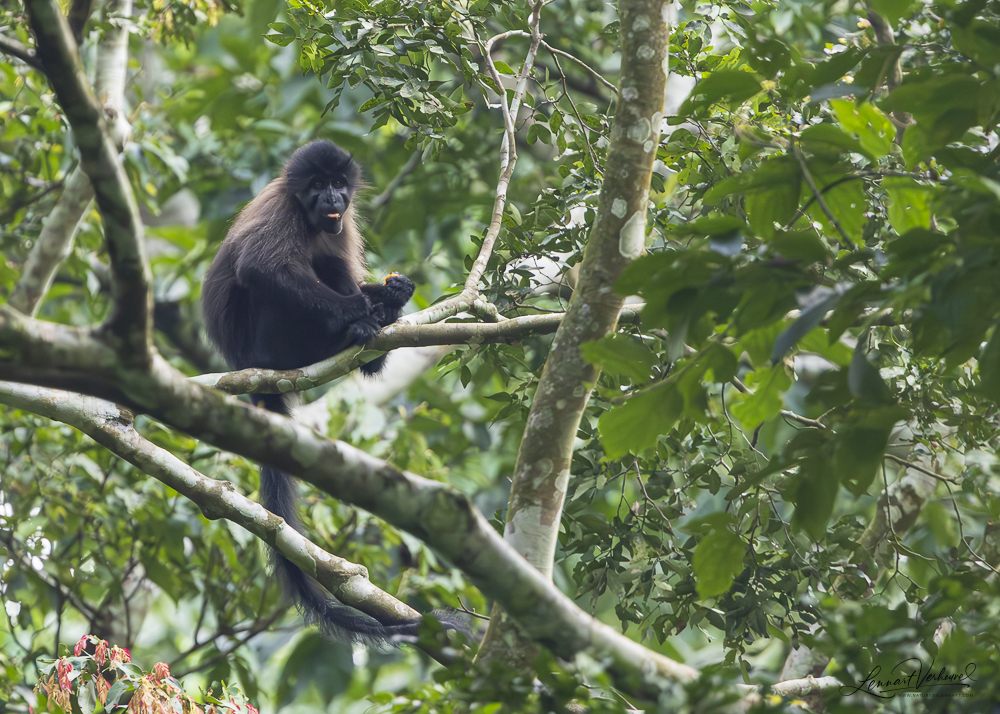
Uganda Mangabeys and Dent’s Monkeys
We also had excellent looks at three species of hornbill: White-thighed Hornbill, Black-casqued Hornbill, and Piping Hornbill.
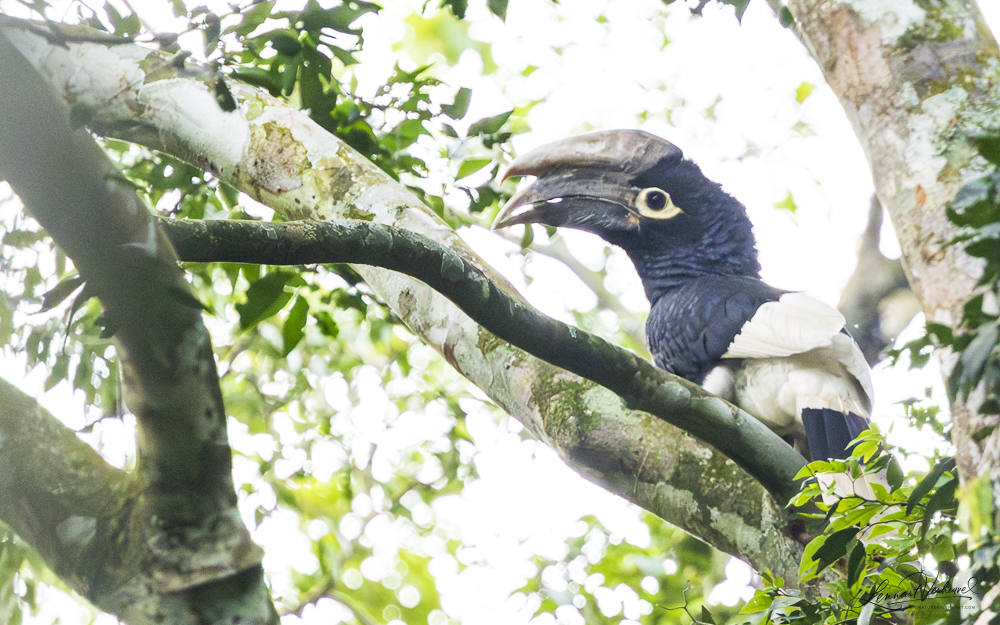
White-thighed Hornbill
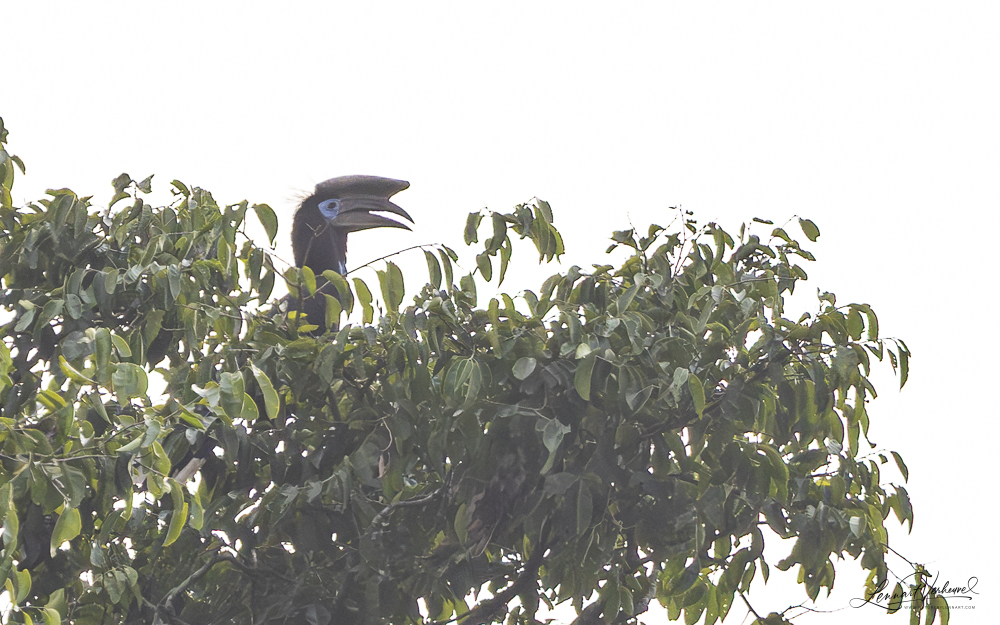
Black-casqued Hornbill
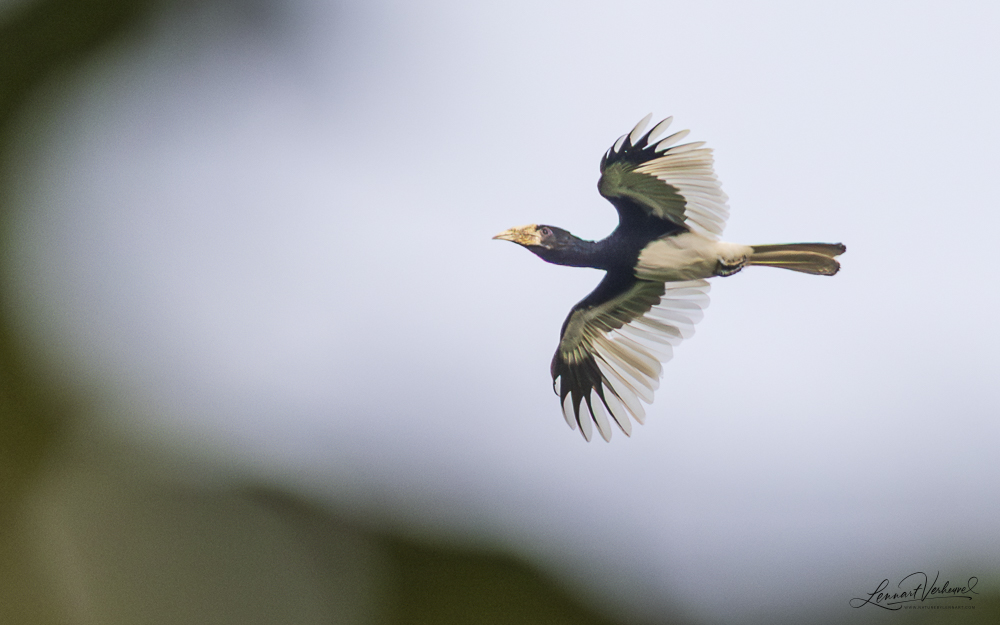
Piping Hornbill
Together with the Congo Pied Hornbill—which I had seen earlier but not photographed—we had now recorded four of the seven possible species. All of these hornbills are unique to this area, underlining how valuable Semliki is on a trip.
To round out the day, I was lucky enough to get a better view of another De Brazza’s Monkey along the trail. Apparently only one lives there, and it’s usually very shy, so I was glad this one gave me a clearer look. Hidden behind palm leaves, it had already been watching us closely.
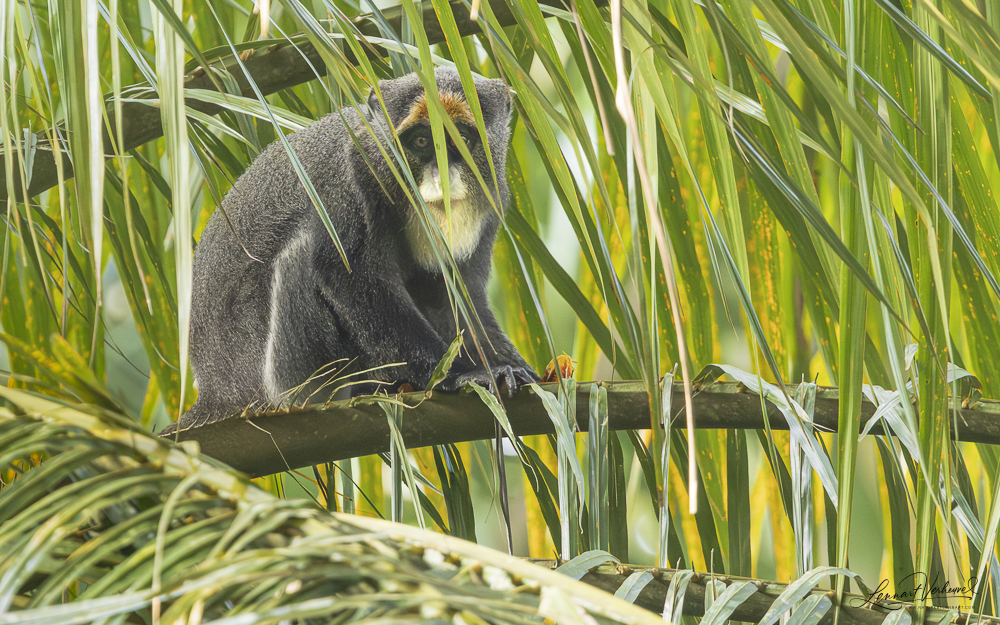
De Brazza’s Monkey
So we could look back on an excellent day, though unfortunately we had to move on the next morning. Still, before leaving we tried hard to find the remaining two hornbill species: Eastern Long-tailed Hornbill and Red-billed Dwarf Hornbill. The strategy was to wait along the main road, hoping to spot them as they flew from their roosts into the forest.
At first, it was disappointing. We did see other hornbills like Congo Pied Hornbill and I finally got a record shot of this species.
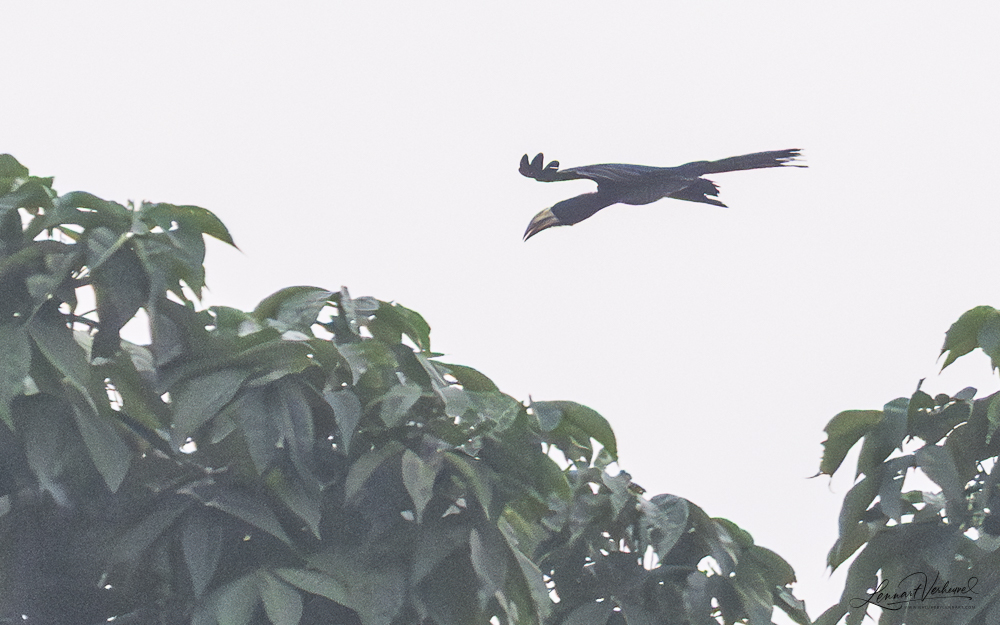
Congo Pied Hornbill
I also got better shots of Black-and-white-casqued Hornbill
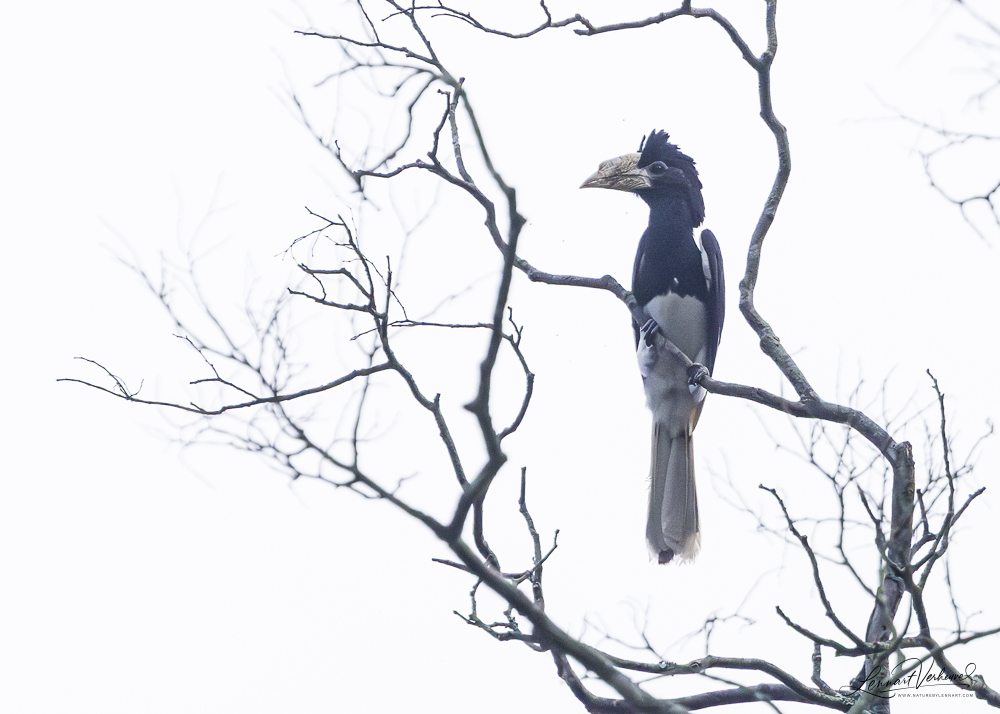
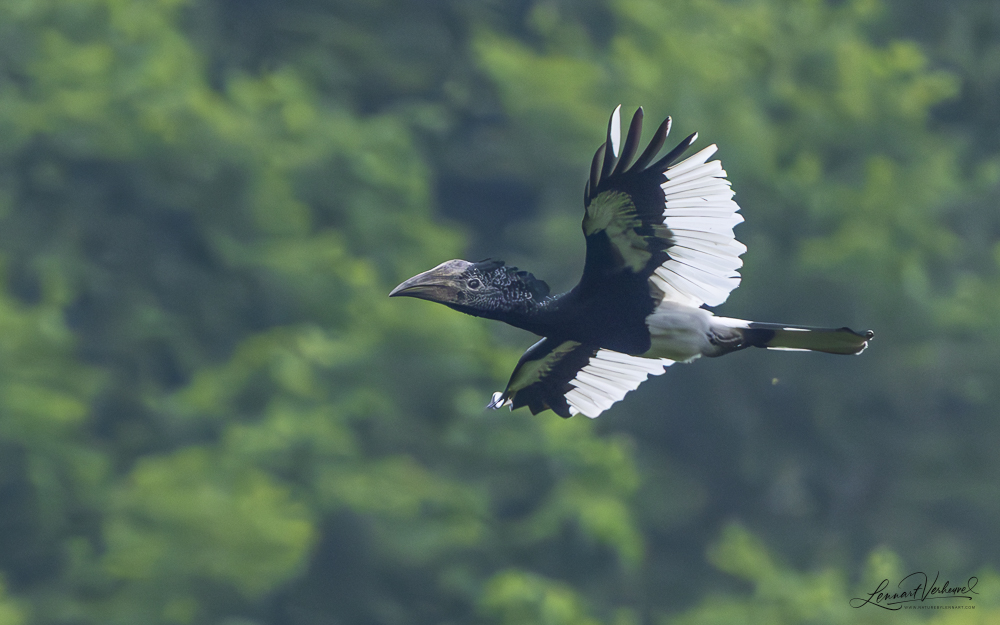
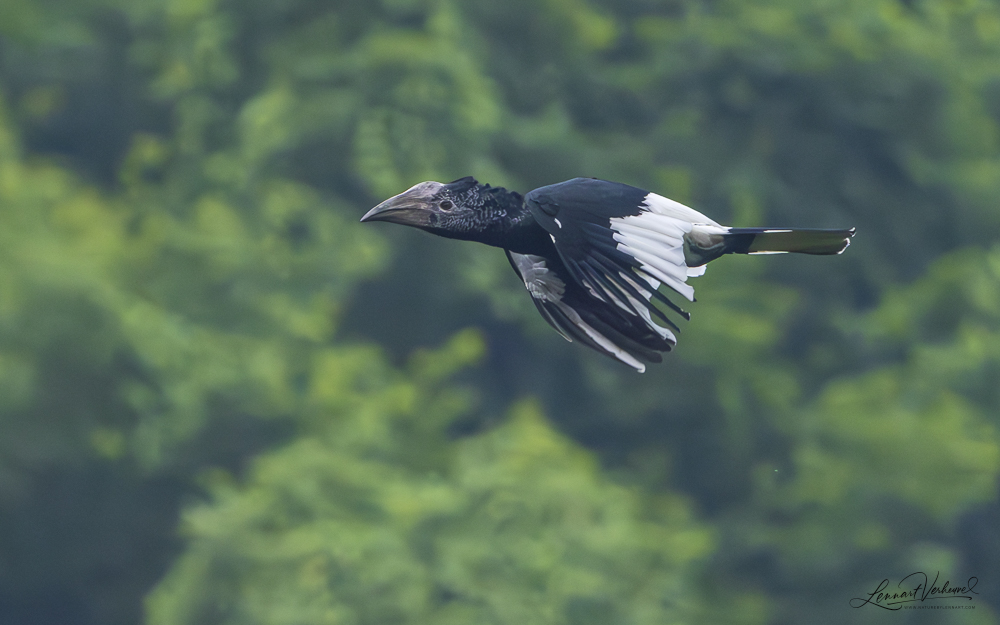
Black-and-white-casqued Hornbill
Yet, the target species were nowhere to be seen. And time was running short; we only had about two hours before we had to move on.
Just when I thought it wouldn’t happen, our guide suddenly heard Red-billed Dwarf Hornbill! He darted into the forest and we followed. Incredibly, we managed to get the bird in view very quickly. What a beautiful sighting and what a stunning bird!
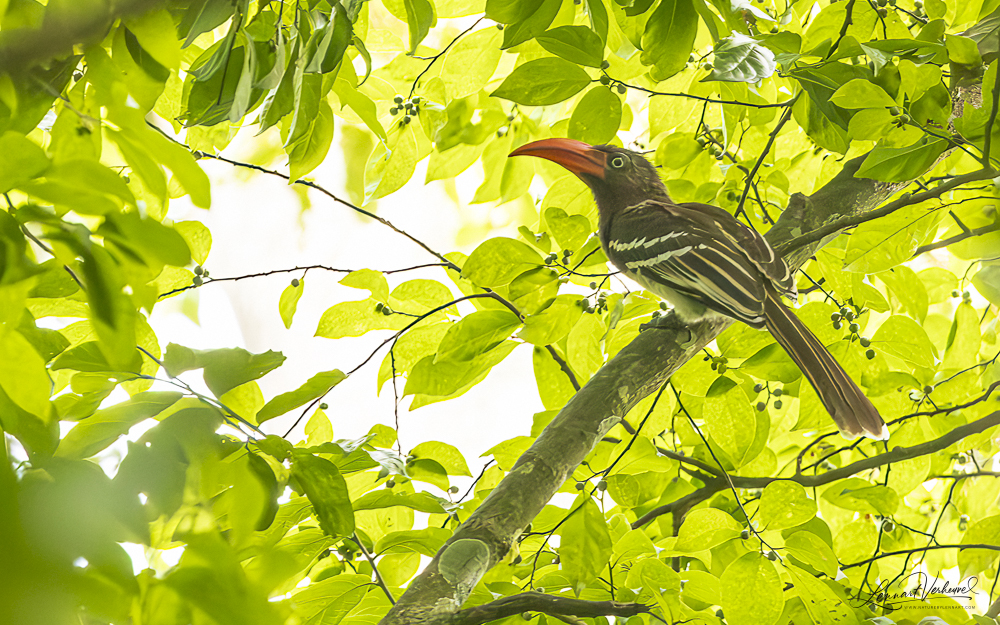
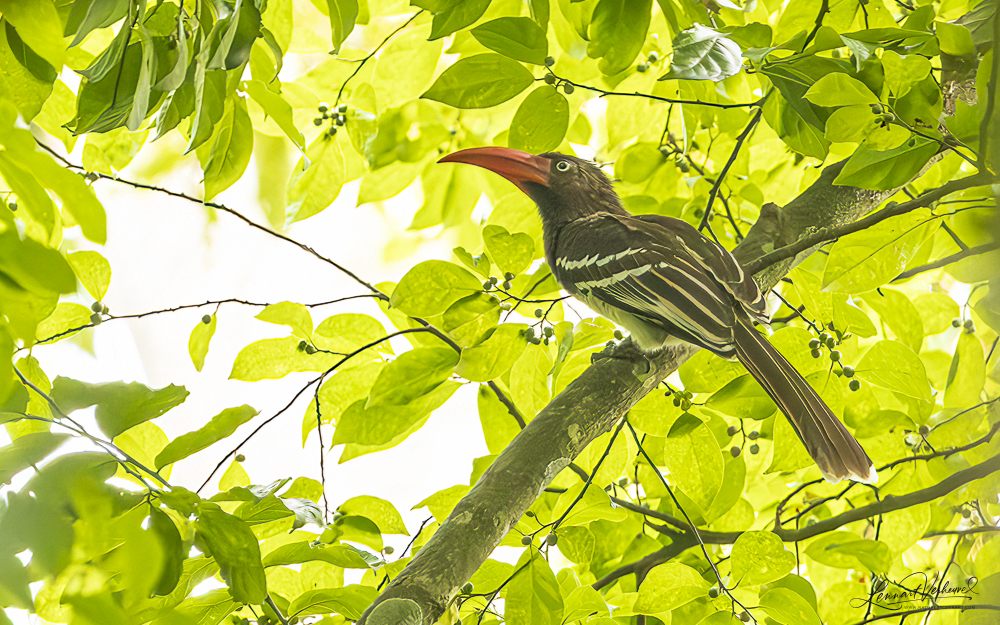
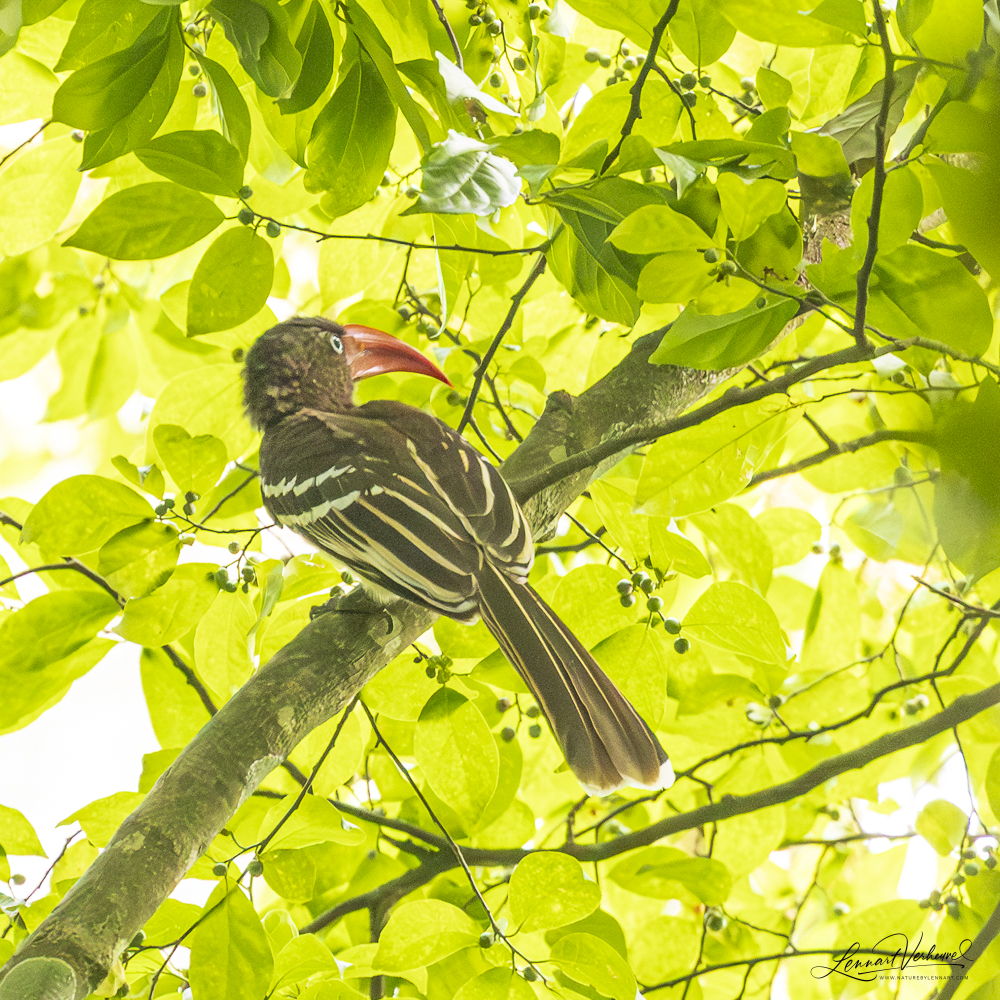
Red-billed Dwarf Hornbill
Would we also manage Eastern Long-tailed? It didn’t look likely—we hadn’t even heard one despite trying playback. Then suddenly, in a flash, Pieter spotted a bird, and Hugo relocated it perched in a palm. I managed just a quick glance before it took off. Recognizable, but no photo! Still, we were thrilled just to have seen it.
We were ready to leave when Alex came running back—he’d just spotted Eastern Long-tailed Hornbills again! It sounded almost unbelievable, but it was true. After a short wait, two birds flew past beautifully, and I even managed some record shots.
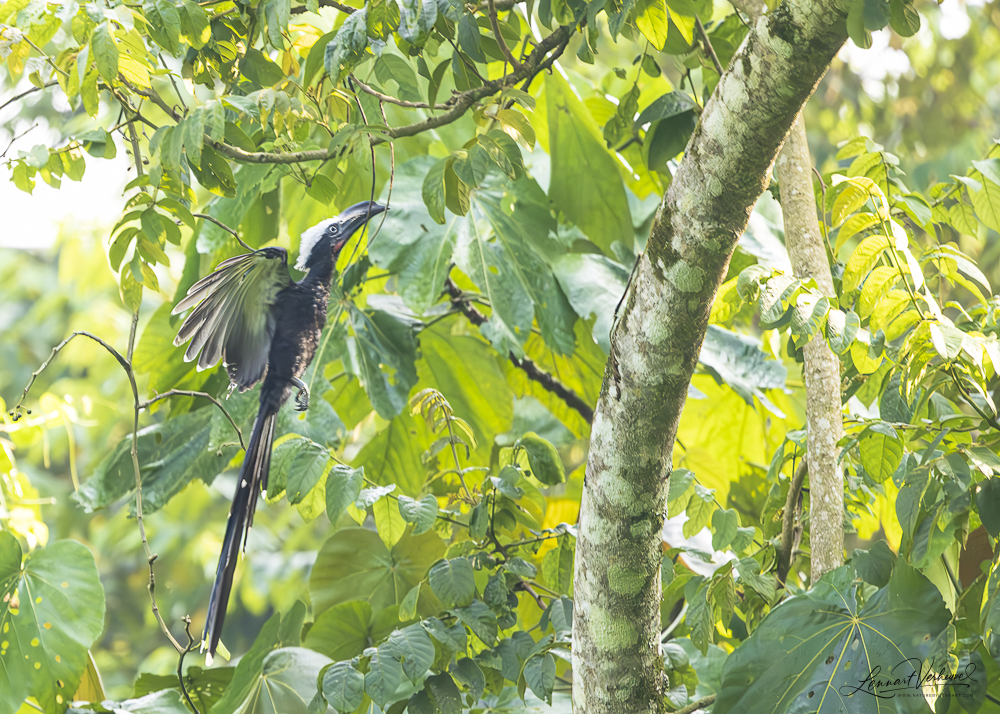
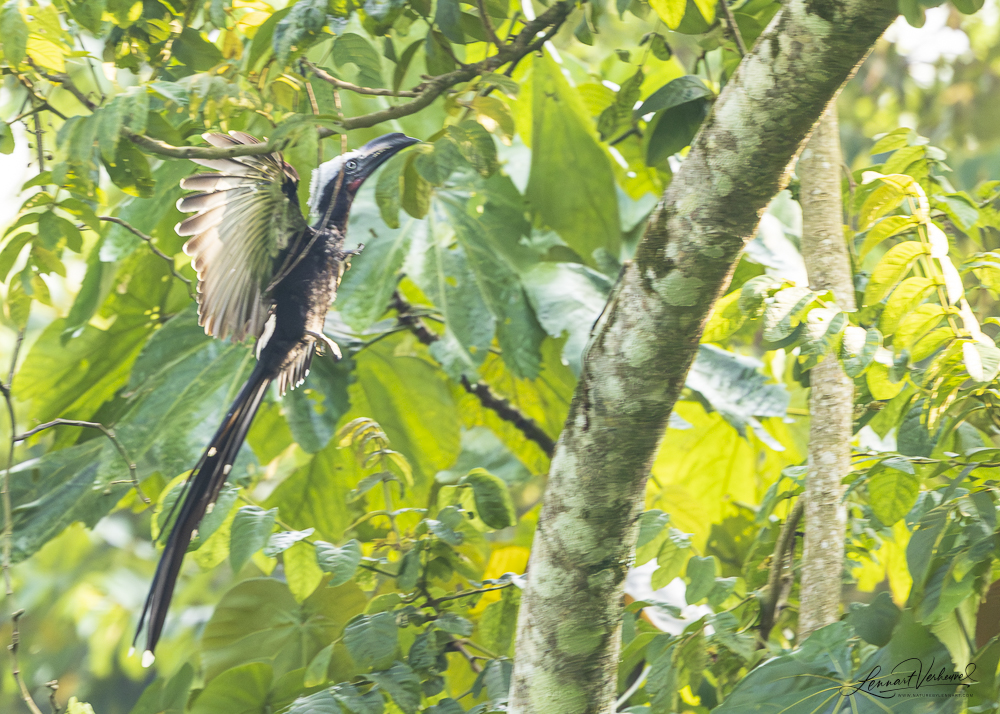
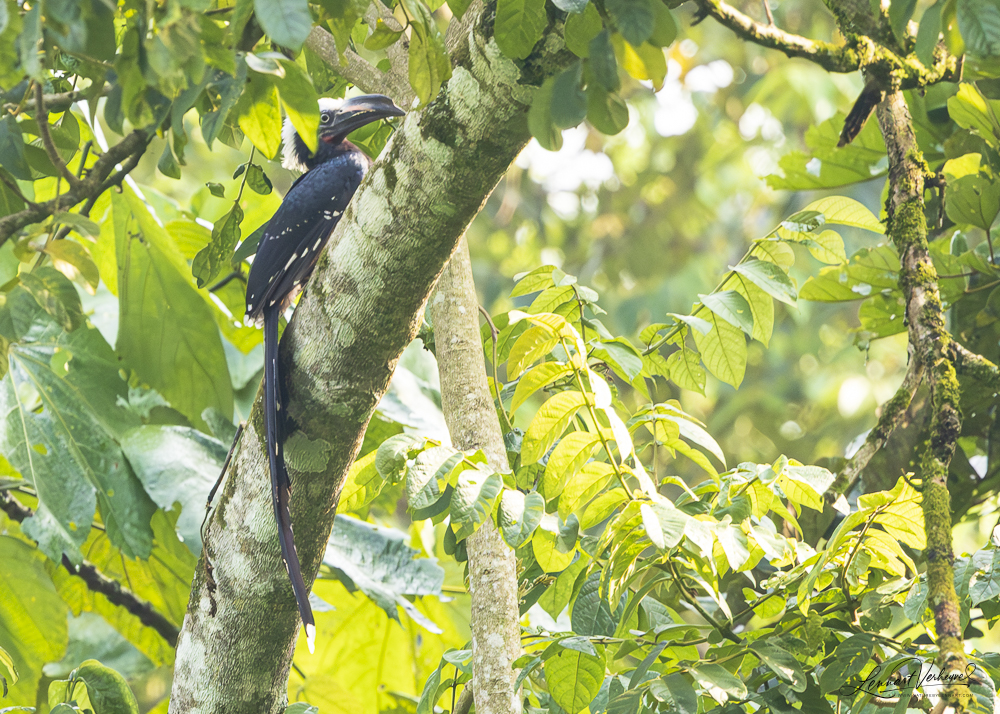
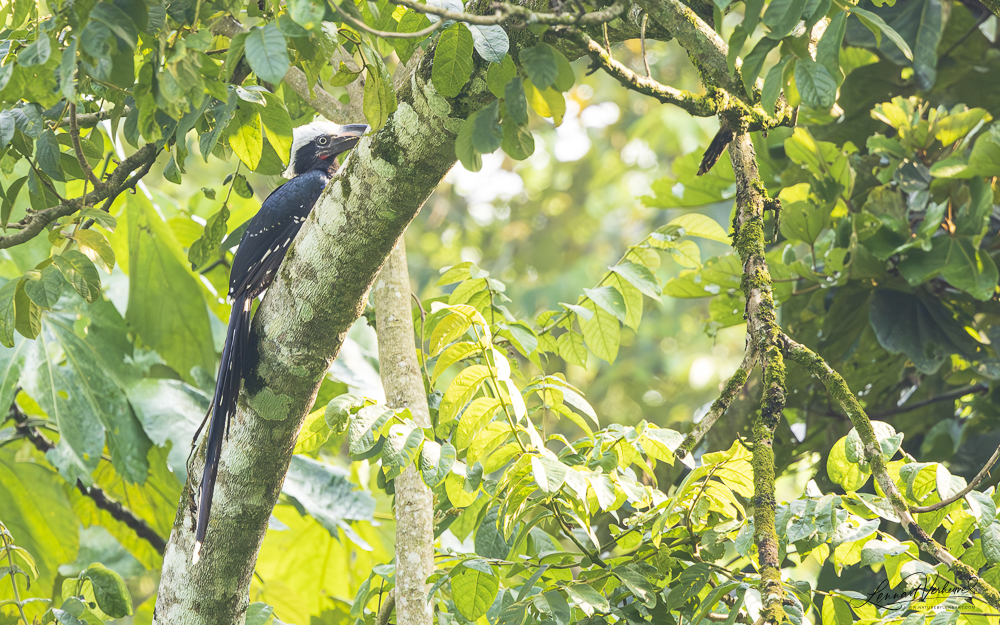
Eastern Long-tailed Hornbill
And with that, we wrapped up our time in Semliki Forest on a very high note. I found Semliki to be an extraordinary place, well worth its own dedicated post!
I also made videoreports of our time in Semliki, which you can watch below.
Want to see more from my trip to Uganda?
Read about it’s number one attraction: The Gorilla Experience!
Also read how we saw one the worlds best birds: the Shoebill!
Also read about a great day in Kibale National Park with Chimpanzees, Forest Elephants and a Green-breasted Pitta!